
- Get inspired
- Towns & Villages
- Gap: gateway to an Alpine wonderland
Set at the foot of the Hautes-Alpes, at the crossroads of an array of mountain roads and hiking trails, Gap knows no limits. A proud ambassador of the Southern Alps, it is a haven for sports, nature and culture lovers alike.

100% Made in Gap
Local traditions in all simplicity.
Begin your tour of Gap with a stroll around the town’s maze of little lanes leading to Place Jean-Marcellin and its rose and ochre facades, redolent with southern French atmosphere. On Saturday mornings, the air is laden with delicious scents as local producers pile their stalls high with ravioles , tourtons and tartes du Champsaur . Next, head to Cathédrale Notre-Dame-et-Saint-Arnoux and the Musée Départemental de Gap, retracing the history of the region since Prehistoric times. The museum also boasts a fine collection of ceramics and paintings.
Voir cette publication sur Instagram Une publication partagée par Gap Tallard Vallées (@visitgap_official) le 23 Juin 2016 à 1 :42 PDT

Naturally rejuvenating
All the goodness of the mountains.
You’ll definitely want to visit the magnificent, 543-acre Domaine de Charance , overlooking the valley. The domain’s remarkable garden and rose garden, planted with 600 varieties of heritage roses, are set on a ledge at an altitude of 1,000 metres. The views from the various terraces are simply breathtaking. Domaine de Charance is also the departure point for hikes to Pic de Charance. The “Piste de l’écureuil” squirrel walk is a must if you’re visiting with children. Perched at a height of 1,200 metres and located 10 km from the town centre, Plateau de Gap-Bayard is a favourite haunt for walkers and offers stunning views over the peaks of Haut-Champsaur and the Falaises de Ceüse cliffs.
Eminently challenging
An all-terrain destination.
After your walk, head to Plateau de Gap-Bayard for a relaxing round of golf on the 18-hole course. Alternatively, you can opt for a fitness trail or spot of cross-country skiing.
The reputed Gap-Tallard airfield is a one-stop shop for adrenaline feaks, with skydiving, paragliding and ultralight flights on the menu. A variety of trail races are held just next to Écrins National Park, including Gapen’cimes, suitable for beginners and confirmed runners alike, while the valleys around Gap attract many mountain bikers and freebikers. The town also offers an indoor skating rink where you can perfect your twists and turns before heading to the ski resorts of the Ecrins or Dévoluy. Last but not least, if you’re more of a spectator sports fan, check out the exciting Monte Carlo Rally, starring top-drivers such as local born S ébastien Ogier .

- TO & Travel Agents


Home » Travel Guides » France » 15 Best Things to Do in Gap (France)
15 Best Things to Do in Gap (France)
Resting in an epic bowl of mountains, the city of Gap is where Provence meets the Southern Alps.
In the background there are peaks 3,000 metres high disappearing into the clouds, but on the streets of Gap with its pastel-painted houses and markets you’ll feel close to the Mediterranean.
There are sights and museums to keep in mind in the city, but a lot of the magic lies in what you can do close by.
The peaks, rivers, lake and woodland offer more active sports than you could possibly pack into one trip.
And there’s something to try at any time of year, whether self-guided or in the company of an expert.
Lets explore the best thing to do in Gap :
1. Domaine de Charance

To really get a sense of the mountain environment enveloping Gap make for this château, which is in 220 hectares of achingly beautiful upland scenery.
There’s a lake, deep forest and humbling rock formations reaching almost 2,000 metres, all laced with walking trails.
The château itself is the information centre for the Ecrins National Park, north and east of Gap.
And in the stables is the Alpine Botanical Conservatory, protecting and documenting the plants in the mountains and organising special guided walks to find rare flowers.
The terraced garden in front of the château is sublime, with views that will stop you in your tracks.
2. Musée Muséum Départemental des Hautes-Alpes

After visiting this museum no aspect of the art, history, archaeology or traditions of the Hautes-Alpes will be a mystery to you.
The galleries here are comprehensive and very diverse, but the most gripping are surely the archaeology exhibits.
See the hoards of Bronze Age torques, rings, daggers and a fabulous belt.
And move on to the stèle de Briançon, an inscribed tombstone from around the turn of the 2nd century made of white marble and with masterful carvings.
More recent but also indispensable is the huge Mausolée de François de Bonne de Lesdiguières, sculpted from black and white marble in a very naturalistic style by Jacob Richier in the 17th century and reaching a height of more than four metres.
3. Walk around the Old Town

That sense of the Alps meeting Provence is impossible to ignore when you negotiate Gap’s grid of old streets and alleys.
There isn’t much historic architecture, even if the roads follow the same plan as in medieval times.
But this is made up for by the legion of tall, pastel-painted houses on every street.
And almost every corner or square seems to have a fountain, each with a different personality, and there’s an abundance of low-key but engaging things to see: Take the Grand Hôtel Lombar on Avenue du Maréchal Foch, a vestige of the Roaring 20s when Gap was in style with Europe’s elite.
4. L’Auberge Marchand

As you peruse the shops on Rue de France, keep your eyes peeled for a plaque above one of the doorways.
At 17-19 Rue de France is the former Auberge Marchand, and while handsome, this ochre-painted house doesn’t seem too important …until you learn the small role it played in one of the most pivotal chapters in French history.
Napoleon spent the night of March 5 1815 here on his way from exile on Elba to Paris, just before the Hundred Days.
He chose this circuitous route through Gap because, unlike the towns in the Rhone Valley, this city was loyal to him rather than the French royalty.
5. Gap Cathedral

The city’s medieval cathedral had started to collapse by the 19th century so a Neo-Gothic replacement was built in its place and finished in 1904. In fact there has been a religious edifice here since Roman times when a temple to Apollo stood on this spot.
Just a couple of years after work stopped on the latest building the cathedral was declared a French “monument historique”. The dominating bell tower rises to 70 metres, making it the tallest building in Gap.
And as you approach the exterior walls you’ll see that they’re polychrome, with rings of white, pink and grey limestone.
6. Village of Chaudun

For a hike to remember you could venture to this abandoned village in the mountains north of Gap.
Chaudun had more than 100 inhabitants in the 19th century, but its isolation and the inhospitable setting eventually forced its inhabitants to sell their land to the state in 1891. Ironically it’s pretty easy to get to now, as you can drive to the Col de Gleizé around 15 minutes up from Gap and then strike out on foot into forest, meadows and beside ravines.
There are panels at the entrance to the village telling its tale, a hiking lodge open to the public and traces of old buildings all in a breathtaking hollow.
7. Parc de la Pépinière

Wrapped around the Musée Départemental is a restorative with centuries-old trees shading its avenues.
There’s an elegant wrought iron bandstand here that is a stage for many events in the spring and summer.
Jeudis du Kiosque is a weekly music event on Thursdays in July and August, when musicians of all descriptions take the stage.
And in May there’s the Gap EXPO, an international trade fair at this location.
The rest of the time there are cool paths under rich foliage, picnic tables and a playground for the youngest.
8. Weekly Markets

On Saturday mornings the tight streets and compact squares of Gap’s old core are taken over by dozens of stalls in true Provence fashion.
The market fills Place Jean Marcellin and extends along rue Carnot , rue de France and rue Elysée.
So if you’re around on this day set the alarm clock and scour these stalls for some fresh fruit and vegetables, nuts, baked goods, regional charcuterie, cheese, meat, artisanal specialities (honey and nougat) and freshly made snacks like tourtons.
On Friday afternoons there’s also an organic farmers’ market in the Saint-Roch quarter.
9. Local Delicacies

At any time of year you’ll be drawn to the scent of tourtons frying at Gap’s markets.
These are a sort of doughnut, but instead of dough they’re a pastry filled with any number of different ingredients.
Sweet, they come with pureed apple or prunes inside, while the savoury variety has spinach, potato, cheese or meat.
You can detect hints of Italian cuisine in dishes like raviole (ravioli) and oreilles d’âne, a lasagne-style gratin often made with crêpes instead of pasta.
For cheese there’s alpine tomme, which tends to be firm, with a nutty, mushroomy flavour.
10. Station Gap-Bayard

In winter Gap gets a healthy coating of snow but you’ll have to travel a little to get to a traditional Alpine skiing resort.
But just ten minutes from the Centre-Ville is a snow-based activity centre with more than 50 kilometres of cross-country trails.
The “Centre d’Oxygenation will set you up with Nordic skiing equipment and any lessons you need to get started.
Then with the help of a map you’ll be gliding off on routes in this massive plateau guarded by the enormous Chaillol and Gleize peaks to inspire you.
If you can’t resist the call of these mountains then guided ski-touring is on offer on these uncharted slopes.
11. Alpine Skiing

And although you’ll need to drive to one of the family ski resorts Southern Alps, it won’t take you long to get to them.
There are seven are within a 40-kilometre radius, including SuperDévoluy/La Joue du Loup, Ancelle, Réallon and Orcières-Merlette.
Nearly all of these are tilted towards beginner and intermediate skiers: For instance, Dévoluy, which is also the most convenient to Gap has 60 kilometres of blue pistes out of 100 in total.
If you come at the height of the season a day ticket will set you back €35.60, and the abundance of sunny runs and awesome views of the Southern Alpine peaks from the top of the resort are all worth the price.
12. Gap’Aventure

In the summer Gap be your HQ for almost any mountain activity you can think of.
But if you’re travelling with children, this “Accrobranche” course a few seconds outside the city needs to be on your list.
You’ll know why once you arrive, because the centre is on the high slopes of the Colline de Saint Mens, and is has the most amazing views of Gap and its surrounding peaks.
You’ll be equipped with a harness, and up in the treetops are 10 suspended courses for you to take on, with zip-lines and rope bridges for everyone aged three and up.
13. Water Escapades

The Durance River courses through canyons and down cascades to the south of Gap.
And if you need an adrenaline hit this is an invitation for white-water rafting and canyoning.
Luckily there’s a branch of Eau Vive Passion Rue Cyprien Chaix in the city organising all manner of river-based craziness.
Diving into a canyon or being hurled off a raft into rapids might be your idea of a nightmare, and if so you could settle for the crystalline waters of the Lac de Serre-Ponçon.
There are nine beaches around this lake that sits in a crucible mountains, and many nautical centres renting paddleboards, kayaks and rowboats.

Drop by the tourist office on Place Jean Marcellin for maps and trail guides for the eight hikes that begin right in the city and wind off into the mountains.
These vary in difficult from a light saunter through Alpine forest to a demanding 3,000 metre ascent up a mountain for calves of steel.
But a simple circuit that almost everyone can try is the Colline de Puymaure, one of the lighter hills overlooking Gap.
You can get up there and back in about 90 minutes.
And up the top are a series of information panels about the two citadels that were built here in the 1600s by the Huguenots.
15. Climbing

Whether you’ve been scaling walls your whole life or are just getting started, Gap is almost as good as it get for climbers.
That’s because the Falaise de Ceuse is only a few kilometres from the city.
This white limestone cliff on the namesake mountain is up there with the top climbing locations in Europe.
Lots of things come together to make this possible: The cliff has a horizontal length of more than four kilometres, most of it bathed in sunshine during the day.
At its foot is a shallower grassy slope and the walls vary in toughness, with heights of between 30 and 130 metres.
15 Best Things to Do in Gap (France):
- Domaine de Charance
- Musée Muséum Départemental des Hautes-Alpes
- Walk around the Old Town
- L'Auberge Marchand
- Gap Cathedral
- Village of Chaudun
- Parc de la Pépinière
- Weekly Markets
- Local Delicacies
- Station Gap-Bayard
- Alpine Skiing
- Gap'Aventure
- Water Escapades
Tourism, holidays & weekends guide in the Hautes-Alpes
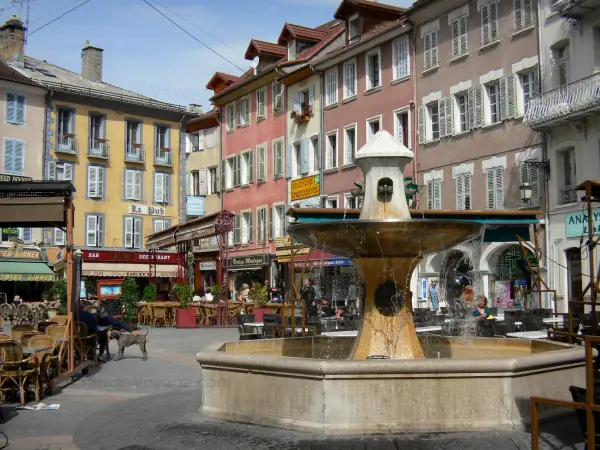
Built at an altitude of 735 metres, Gap is the highest chief département town (préfecture) in France. Its historic centre is the perfect place for a wander, particularly the charming square Place Jean Marcellin and its very lively pedestrian streets. Other places of interest in the old town include the beautiful 18th-century facade of the town hall with its wrought-iron balconies, and Notre-Dame-et-Saint-Arnoux cathedral, a 19th-century Neo-Gothic building with a 70-metre high bell tower porch and a fantastic organ inside.
No to be missed: the Gap departmental museum devoted to archaeology and the history of art, where visitors can admire exhibits like the white and black marble mausoleum of the Duke of Lesdiguières.
A few kilometres from the town centre is the Domaine de Charance estate, the former summer residence of the bishops of Gap and today home to the National Alpine Botanical Conservatory and the Écrins National Park Visitor Centre. As well as these two places dedicated to nature preservation, the estate possesses a formal and a landscaped garden, as well as a 220-hectare park with a lake.
As for events, the town of Gap hosts the International Folk Dance Festival every July.
Additional information Gap
From the Middle Ages, its strategic location between Provence and Dauphiné it has become an important trading center and a step on the road to Compostela connecting Turin to the Rhone Valley.
Located at 735 m altitude, near the Parc Naturel des Ecrins, the Country Gapençais offers an infinite range of sites, moods and activities.
Preserved in this universe where the sun shines 300 days a year, clean air, sport, recreation and culture will revel without restraint.
The high-alpine cuisine is based on the traditional mountain cuisine, made based on simple and natural elements. Among the specialties you will find the tarts with potatoes, meat or prunes, the "Donkey Ears" (gratin of fresh pasta with spinach and cheese country), ravioli (made from potato gratin baked with milk, cream, butter and cheese), volumes, blocks ...
Things to see and do
- Historic city center:
- The current configuration of the city center approximately corresponds to the general appearance of the medieval city.
- By strolling on foot you can discover the 18th century Town Hall and the 19th century cathedral (listed as a historic monument) as well as the squares and streets closely linked to local life and history.
- Randoland treasure hunt: Explore the historic center and discover the many puzzles that punctuate the route.
- Musée Muséum Départemental:
- The Musée Muséum Départemental is a cultural relay for everyone. The works and objects collected and preserved continue to diversify: herbariums and stuffed animals, archeology and numismatics, witnesses and stories of local history, ethnology of Alpine valleys and distant lands, paintings, ceramics, sculptures, digital installations...
- Free, the Museum is open to everyone.
- The team multiplies the opportunities to come and return: exhibitions, fun, educational, scientific, cultural activities, introductory workshops, exchanges of know-how, live shows...
- Cinémathèque de Montagne: To discover the world of mountain cinema through different spaces: exhibition, virtual reality, cinema room.
- Domaine de Charance:
- The Domaine de Charance, backed by the mountain which protects it from the winds, this vast estate of 220 hectares located at an altitude of 1000 m and a few kilometers from the town center is part of the municipal heritage of the Gapençais since 1973. Botanical collections, terraced garden classified "Jardin Remarquable" in 2005, the agricultural ecomuseum, conferences, exhibitions and theme days. Treasure hunt “The Mystery of Darkness”: go as a family to the Charance forest with compass and character cards.
- The mission of the National Alpine Botanical Conservatory is to study and protect rare and endangered wild plants throughout the Alpine territory. It also has a role in conserving plant heritage and a role in informing the public.
- The administrative headquarters of the Ecrins National Park is also located at Domaine de Charance within the castle, it has a reception and information role for the public.
Places of interest
Events and festivities.
- All year round:
- Wednesday and Saturday morning: farmers' market. Friday afternoon: organic market.
- February: Gap Bayard au Féminin, Carnival of the Alps.
- April: Salon Artisan’art.
- The 1st Monday in May: Gap Fair.
- June: Street arts festival All out, finally! Rose Day in Charance, Music Festival.
- July-August: “Eclats d’été” Festival. “Open air” exhibition. Nightlife in the city center.
- July: World Culture and Music Festival, European University of Saxophones.
- The 2nd Monday in August: Gap Fair.
- September: Critérium Bouliste - St Arnoux Festival - Penas & Bandas Festival - European Heritage Days.
- October: Gapen’Cimes Trail.
- November: Meetings of the Mountain Cinematheque.
- The 2nd Monday in November: Gap Fair.
- December: Christmas market.
Visits, leisure and activities nearby
- Site Gap-Bayard: Located 7 miles north of Gap, at 1250 m altitude, the communal property of 220 ha has 50 km of cross country skiing. In 1989, a public golf 18 holes on 120 acres is made between forests and pastures as well as two health course.
- Site Gap-Tallard: Platform internationally recognized, characterized by frequent weather favorable for all air sports airfield Gap-Tallard welcomes both training and competition in a large number of practitioners. This is the 1st Parachute Center in Europe.
- The Mountain Céüze 20 km Gap offers numerous hiking trails, horseback riding and mountain biking. She is known for its cliff climbing equipped and accessible through the neck of Guerin ( Sigoyer ).
- Chaudun, this site occupies a vast mountainous amphitheater on three common Gap, Rabou and La Roche-des Arnauds at an altitude ranged between 1000 to 2700 meters. Former village Chaudun is now owned by the Forestry Commission and has become "biological reserve" which have developed summers of trails from Col de Gleize of Rabou and Roche-des-Arnaud.
- The Balcony of Gapençais, circuit open to hiking, horseback riding and mountain biking, to discover the many treasures Gapençais Basin, its landscapes, heritage.
- The proposed activities for children are very varied. In summer: swimming, fishing, water sports, ropes course, educational farms, climbing, air sports, mountain biking, hiking, pony rides ... In winter: skiing, sledding, ice skating, snowshoeing, walking, dog sledding or skiing joëring (pulled by a horse) ...
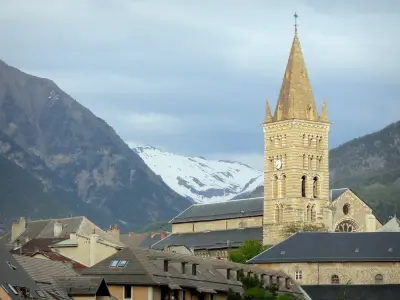
Restaurants
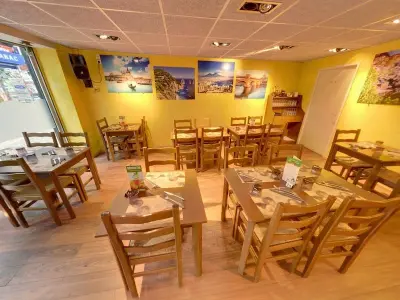
Bed & breakfasts

Vacation rentals
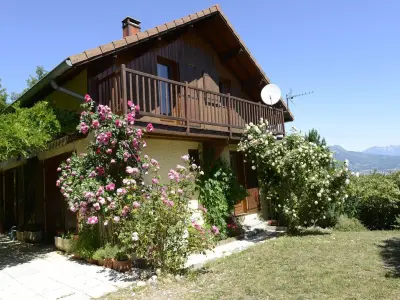
Related articles Gap

RETAURANTS AGENDA ACCOMMODATION

Route Napoleon

Nature & discovery
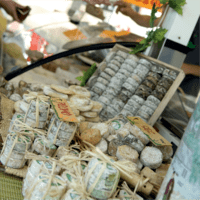
Taste of the land

Entertainment

Children's corner

10 PRACTICAL CLICKS

Sustainable Development

Toutourisme

Quality approach

Our documentation
Les cookies nous permettent de garantir le bon fonctionnement de nos services. --> Cliquez ici pour en savoir plus
- Australasia
- Latin America
- North America
The Ultimate Gap Travel Resource Website

Whereas in 2001 there were just a handful of gap travel providers, now in 2011 there are getting on for 100 gap travel organisations, and many of these are handling thousands of travelling customers every year.
Gap Travel has grown because taking a gap year or gap break has become the norm for young people leaving school or university. Now, with tuition fees presenting a financial threat to potential university students, and with the current poor employment prospects, many young people are thinking that they may just as well take a gap trip.
Older people too are taking gap travel journeys. Most do not take a full year, and so the term gap year is being replaced by gap trip, or better…gap travel.
People who take gap travel journeys are often referred to as gappers or gap travellers.
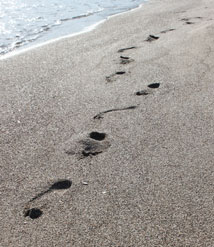
It is important that students who are planning to go to university, or find a job upon their return, do something worthwhile on their gap travels, such as volunteering or undertaking paid work, or learning new skills such as how to sail or how to speak a foreign language. A gap trip spent simply having fun will not impress the university admissions people or the employers nearly as much as a well structured and useful gap travel journey..
Most people decide where to go on their gap travels first, then look at options for activities in the countries that they plan to visit, and there are lots of gap travel options, such as adventure travel, volunteering with local communities or with wildlife or conservation, paid work, learning new skills, learning a new language, taking tours and much more.
We hope that this website will give you ideas about where you can go and what you can go on your gap travel journey.
Insight: For migrants, the Darien Gap is hell; for adventure tourists, it's a magnet
- Medium Text

CONFLICTING GOALS

BIG QUESTION MARK
Communities profit.
The Reuters Daily Briefing newsletter provides all the news you need to start your day. Sign up here.
Reporting by Daina Beth Solomon in Mexico City and Laura Gottesdiener in Monterrey; Additional reporting by Elida Moreno in Panama City and Maria Laguna in Mexico City; editing by Stephen Eisenhammer and Claudia Parsons
Our Standards: The Thomson Reuters Trust Principles. New Tab , opens new tab

World Chevron
Ukraine's national grid operator Ukrenergo said on Thursday its power substations and generating facilities in five regions were damaged in overnight Russian attacks.

Russia launched a "counter-terrorist operation" in parts of the city of Nalchik and in the Cherek district of its southern Kabardino-Balkaria region on Thursday, the RIA news agency cited local authorities as saying.
Gap year travel

- 1.2 Itineraries
- 2.1 By plane
- 2.2 By train
- 2.3 By boat
- 5.1 Before you go
- 5.2 On the road
A gap year is an extended break that some people take at a life transition, such as between studies, between study and work, or between careers.
There's no need for such a trip to be precisely a year, of course, but a year is a typical length of time for people who have just finished secondary school: they typically have to delay university entrance for a year to take the time off. Some of the same principles can be applied to just a summer between school and college, or any extended break "between jobs".
This article discusses options for low budget long-term travel of the type that a gap year traveller might be interested in. See Volunteer travel and Working abroad for more general but related discussion.
Prepare [ edit ]
Pre-departure planning is important. No matter how much you plan for the trip there may be instances where you have to throw all the planning out the window. However, there are certain things you should watch for and plan for:
Visas [ edit ]
Check with the appropriate consulate or embassy in your country to find out if you will need a visa to visit the country of your destination, especially for an extended period of time. Some countries have extremely detailed and complicated entry/departure laws, and treat visits of a week or two very differently from longer stays. Some pairs of countries have an agreement for working holiday visas which allow a citizen of one to work in the other for a limited time.
The IATA Visa Database , provided by Delta Air Lines, is an excellent place to check whether you need a visa or not. That database is what airlines rely on; if it says you need a visa and you do not have one, then they will not let you on the plane. Many will not refund the ticket either; they consider visa troubles your problem, not theirs.
The need of a visa also depends on what you are going to do; even if tourists may be visa exempt, travelling for studies, volunteering or work (or anything that may be regarded as such) can require the appropriate visa.
To get a visa for work or studies you probably need a letter from the employer or institution, and possibly other paperwork. Details vary. Such other kinds of visa may take several months to process, check in time.
Itineraries [ edit ]
Itineraries are important for two people: the traveler and the traveler's family. Some parents will be more supportive of allowing their son or daughter to go abroad if they know where they'll be. An itinerary may be helpful in the event that an emergency happens and somebody needs to contact you while you're away, and helps to satisfy a parent's instinctive need to know where their children are. An itinerary describes the route of the journey or tour or the proposed outline of one.
Money [ edit ]
Since gap year travellers are gone for long time, forfeiting their work income, they usually need a tighter weekly budget than they would have as holiday travellers.
If you're traveling to one area, check the cost of living there. If it's high you'll probably want to budget more carefully and save some money before leaving. The lower the cost of living the less you'll have to save, but be sure to have a back up reserve in emergency cases.
Consider opening a second account in your home country and allow your parents or a close relative to have access to the account. In the event that you have to come home early they can withdraw money from the account, which can be used to purchase a return ticket for you – or the other way around. Consider whether making the accounts as independent as possible makes sense. In some situations, such as if your ATM card gets stolen or compromised, it can help to have access to another account, but this can also make things overly complicated. Some cash in a secure place can help in similar situations.
Timing [ edit ]
Gap year travellers are less dependent on time management . At major holidays and tourist seasons, both transportations and venues are overcrowded and expensive. If you have an empty schedule, visiting tourist destinations off-season on weekdays will save both money and effort.
Get in and around [ edit ]
If your gap year is going to involve several stops in several different countries and continents, you should look into the many budget tickets designed for long term travel. Gap year travellers are often referred to as backpackers and will often receive discounted travel. Examples include:
By plane [ edit ]
Open ended return tickets allow you to come home at any time within a given period (often a year, sometimes six months, rarely 60 days.) They're generally more expensive than regular discount round-trip tickets, but generally much cheaper than a fully-flexible/refundable round trip (or two one ways, except on some routes where there are the inflexible discount one-ways.)
Open-jaw tickets allow you to return from a different city than the one you flew into, and may be worth saving you the cost and time of returning to the city you started in; fares will be highly variable - in the best case, the cost will be in essence the average of two discount round trips, in the worst it will be comparable to two one-way tickets. It always pays to check for yourself in these cases.
If your travel plans are more ambitious than that, round the world flights might fit your needs.
Some options and issues:
- Most major airlines schedule flights out to 330 days out, rather than a full year.
- While it's generally possible to change discounted tickets for a fee to allow more time, most discount fares have a limit on their time of validity (often 30 or 60 days, sometimes 6 months) and exceeding it will often result in a very large increased fare on top of the change fee.
- This can also be handy if your travel plans are open, but border crossing or visa rules require proof of an onward ticket (alternatively, look at low-cost carriers within the region.)
- Also with legacy carriers, never "toss" or skip a middle segment of a single ticket without formally cancelling it, as a no-show segment will result in cancellation of later segments. Cancellations in advance may or may not be allowed, and if allowed will often require paying a change fee or fare difference. Low-cost carriers are often more flexible on this – check with the individual carrier for their rules.
- In some cases for legacy airlines, it's cheaper to buy tickets departing from within the developing world from the airline or local travel agency after you get there, rather than directly from an airline or from a travel agent at home. This is almost never the case with low-cost carriers.
By train [ edit ]
There are long term train tickets aimed at backpackers and travelers. Sometimes these will let you travel more cheaply than any local fares. Examples include the Interrail and Eurail passes in Europe and the Backpacker rail pass [dead link] in Australia. For travelers in North America, see Rail travel in North America .
By boat [ edit ]
A less common option is to go for a cruise with a boat of your own (or as crew with somebody else). For a year of travel this often means crossing oceans, which requires solid skill and experience, at least if you are in charge, and commitment regardless. A yacht cruise of a few months is quite feasible also along coasts or inland waterways, with somewhat lesser requirements on you and your boat.
On a long cruise, you probably want to spend quite some time in places you like. The main marina may not be the cheapest option, and the marina may have special offers for long time stay, at least off season. There are several ways to cut down living cost with a city in reach.
If staying a long time in a single country (abroad, or with a foreign flag), check customs rules etc., as you probably don't want to have to pay import taxes. In Europe, all of EU counts as one country in this respect.
By car [ edit ]
If you take your car with you, you probably want to be able to camp to maximize your liberty. You'll at least want a tent that suits the local conditions (weather, pests) and a camping stove (for which fuel is available locally). These can be bought locally or brought in.
Foreign cars and driver's licences are accepted in most countries, for a limited time. In some cases buying a local car and bringing it back makes sense, at least if you can work the tax and duty system to your advantage. You could also buy a used car cheaply and sell it when leaving, but this includes many pitfalls, both in avoiding lemons, and tax-wise.
By bus [ edit ]
Work [ edit ].
A long trip may be impossible to save for in advance. Often gap year travelers want to support their journey by taking work, often of a low-skilled and/or intermittent nature. Unfortunately, working in other countries often requires a work visa. Typically these are onerous for gap year travelers: you need to find an employer to apply for the visa, the visa is expensive, and the employer must show that they cannot hire someone with your skills locally. The work visa will be tied to your term at that employer. However, there are some visa schemes and work schemes that cater specifically to those who are looking for a job to support their travel.
If you are a citizen of certain countries, you can work in some other countries without needing a visa at all:
- citizens of a European Union country can work in other EU countries without a visa
- citizens of Australia and New Zealand can each work in the other country without a visa
Gap year travelers who are under 35 should look into working holiday visa arrangements where you can go to a country for a certain period of time, often 12 months and sometimes up to 24, and work intermittently. The intention of the visa is that you work to fund your trip, and there will typically be restrictions on your working, including: not working for more than a certain amount of time during the visa period, not working for any one employer for a long period, working only in specified industries and sometimes not working in jobs that further your career path.
These are typically reciprocal arrangements: your country will offer visas of this sort to citizens of certain other countries and those other countries will do the same for you. Hence it is best to check with your own country's foreign affairs officials to see if you have reciprocal visas, and if so, with which countries.
See Working abroad for suggested employers and industries, Teaching English for one type of job, and Volunteer for volunteer opportunities.
Learn [ edit ]
An increasingly more popular option for those planning a gap-year is to travel and learn . This is especially popular with school leavers, allowing them to take a year out before university, without compromising their education. In many cases, enrolling on a gap-year course abroad can actually improve your chances of moving into higher education back in your home country.
Typically there will be a tuition fee to enroll in these educational programs. There are two reasons for this: firstly, many of these courses are run by private institutions, and secondly, because international students rarely attract government funding.
There are a number of organisations offering gap year educational programmes.
If you are enrolled already, you may have the opportunity to study a semester or a year as exchange student, at an institution your university or department has cooperation with, or through multilateral programmes, such as Erasmus . The studies may be in a speciality directly relevant for your exam or on separate related subjects. Some universities offer self-contained cross-subject packages for exchange students, to be added to your exam (such as studies on human rights and related issues, or on the region of the country). The exchange is usually not targeted at first-year students.
Cope [ edit ]
It is every traveler's dream to take an extended trip - whether it's three months in Europe or a year of around the world adventures. The first thing to realize when considering a long trip is that travel can be hard work. A trip isn't the same as a vacation and can often be more taxing than the work or school that you're leaving behind. A long trip can involve dozens of new places or an extended stay in just one or two. In either case there will be the daily challenges of functioning in a new environment. Things as simple as buying a bus ticket or fresh vegetables at the grocery store need to be relearned - often again and again.
Before you go [ edit ]
- Talk to other people who have done a trip similar to the one you are planning. If you don't know anyone personally, try any of the dozens of online travel web sites full of first-person travel stories covering every possible type of trip.
- Plan big and loose . Read everything you can about the area you will be visiting. There may be sights and attractions you didn't know about. A rough outline of your trip might have three or four target points and a variety of ways to get between them. You don't want to find out that the weather isn't what you thought, or the guide book was incorrect, after committing to 6 weeks in a specific spot. Some trips will allow you more leeway than others. Travel plans in Asia can often be made day-by-day while summer travel in Europe should be organized at least a few weeks ahead, unless you're prepared to hunt around for hotel rooms and train seats.
- Set up a pre-trip time-line so you don't end up with a full todo list your last week of work or school. Things to consider are doctor's visits for a check up, inoculations, and prescription refills; purchasing plane tickets; renewing passports and obtaining visas and other documents; checking your insurance coverage abroad and purchasing additional travel insurance if needed; and don't forget visiting friends and family members!
- The longer the trip, the lighter you should pack . This might seem counterintuitive, but it's true you can afford to lug a heavy bag around for a week or two, but do you want to have anything extra for a year? Stick to the absolute basics and know what you can and cannot buy at your destination(s). There's no point in bringing 6 months of toothpaste to Europe or buying a sarong at home to take to the tropics. If you are visiting several climates, try to arrange it so you visit the warmer places first and coldest last. That way you can purchase sweaters and long pants and not have to carry them any more than needed. Alternately, visit cold climates first and then ship unneeded layers home – or sell them off. A good rule of thumb is to bring one outfit for the hottest day you're likely to encounter, one for an average day, and one for the coldest. Make sure everything goes with everything else (if that's important to you), and remember that layers are always best.
- Be prepared for uncomfortable trips . You will often find yourself in a busy, cramped, economy class environment and it could be for many hours – especially long plane trips and long bus trips. If you want to arrive at your destination refreshed and able to enjoy the sights, then try a good quality travel pillow to support your head, some ear plugs to block out the screaming babies, and an eye cover to block out the sun or cabin lights. Just avoid those cheap U-shaped pillows from airport shops – your head drops forward and you wake up with a stiff neck.
- Plan your trip around activities , not just sights. Looking at every church in Paris or every temple in Katmandu can quickly turn into a blur of monotony. Activities such as cooking, language classes or volunteer work can keep you from turning into a spectator in your own adventure.
- Make contact with the locals before you go. Maybe you have a friend-of-a-friend or a foreign exchange student from high school you remember, or just found a friend through a travel web site; almost everyone is happy to welcome a foreign visitor to their home town. This might be as elaborate as a home-stay for a few weeks, or just coffee in their home or dinner at a local restaurant.
On the road [ edit ]
- Keep a travel journal . This can be as simple as a list of dates and places or as complex as a full diary and scrap book. Looking back over your trip can bring back amazing memories that might otherwise be buried under new sights and experiences. Set a time each day to write - over breakfast or an evening cocktail are both good times to step back and reflect on all you've accomplished. If you are traveling alone a journal can be a companion to confide or complain to. Journals are also great ways to give advice to other travelers by recording recommendations or criticisms of hotels, restaurants, and travel services.
- Budget time and money to treat yourself along the way: living hand-to-mouth just to add an extra week or month to your trip can sometimes drain the joy out of the entire venture. A special meal once a week, or a night at the movies once in a while.
- Take vacations from your trip - and travel partners: look for local treats like sauna and massage in South East Asia or hot springs in Europe. Sometimes a few hours of indulgence can recharge your travel batteries. Plan a few days or hours each week where you and your travel partners can have some time alone. This will help ensure you remain happy to see each other for the rest of the journey. Two people can see more than one, and this way you'll have something new to talk about over dinner.
- Vary your style . It's easy to get into a rut on a long trip - always the same sort of hotel, always the same mode of transportation and soon every place starts to look the same. If you're an independent traveler, try taking a guided tour - you'll make friends and find out new things about the places you're exploring. If you're usually a tour groupie, strike out on your own for a day or two and find adventures off the beaten path. Many travelers buy one guidebook before they leave and stick to it like a holy book. Think about trading guidebooks with a fellow traveler for a day (or forever). One night spending a little more or a little less on hotels, restaurants, and transportation can show you a whole new side to a city. Even just seeing a different time of day can keep the days from running together. Night owls might be surprised at what's going on at day break - especially at local marketplaces or just watching the morning commute from a cafe.
- Make a basecamp : pick a central transportation hub (someplace with a lot of travel resources and cheap plane or train tickets. You can use this as "home" even if you only spend a few days there. Pack several different small bags for each park of your trip and keep them in a locker or left luggage in your "home town". After each portion of your trip you can stop by, rest up for a few days, and grab another bag for the next part of your trip.
- Learn a language : a long trip is the perfect time to really get to know a culture and its language(s). Even if you are planning on visiting several countries, pick one that you have always been interested in and set a goal of learning as much as you can.
- Bring your hobbies : doing any activity, even traveling, all the time can get boring quickly. Find something you enjoy and make that the point of your trip. Bring a musical instrument and play it in every park, learn a local board game like Chinese chess and play with a new person everyday. Any interest can be the backbone of your adventure: follow in the footsteps of a historical or literary figure, journey from the ancient past to the present looking at art or shipbuilding or military costumes, learn a new recipe every week.
- Leave the guidebook in the hotel room: try showing up in a new town knowing nothing about it. What do you find there? What do the locals suggest going to?
- Get some exercise . Exercise helps you maintain a good mood.
- Socialize . Other travelers are easiest to meet and will probably be most amenable to befriending you while you're passing through.
- Stay in touch . Reach out to people back at home every so often.
- Know your travel partner . After a long trip, two great friends can easily turn into two great enemies, and this will make for a much longer trip. A way to find a good traveling partner is to pick one with whom you have had a fight, so you have seen them at their worst.
- Has custom banner
- Articles with dead external links
- Outline topics
- Outline articles
- Reasons to travel
- Topic articles
Navigation menu
Hrmm. Looks like you're using an older browser, which means some site features may not work they way they should. For the full gadventures.com experience, we recommend upgrading to the most recent version of your browser . It's worth it! Honest!
View all tours
- North America
Central America & Caribbean
- South America
North Africa & Middle East
Few travellers make it to this icy continent, but the lucky ones who do get to explore a frozen Eden ruled by the elements and teeming with wildlife.
G Adventures Land
G adventures sailing & cruises, g adventures private travel.
Whether it’s a family retreat or a girls trip, you can surround yourself with a hand-picked crew and customize a tour that fits you all perfectly.
The Geluxe Collection
Our new line of premium active adventures is officially here. With perfectly paced itineraries, one-of-a-kind accommodations and elevated dining, this is adventure at its finest.
National Geographic Journeys
Go deeper into the cultures and habitats of the places we explore. More is included and you’ll enjoy greater hands-on exploration, interactions with local experts, and freedom to roam.
National Geographic Family Journeys
Are you an adventure-loving family in search of meaningful ways to discover the world together? These tours are specially designed for travellers seven and up and their inquisitive families.
Jane Goodall Collection
Step deeper into the animal kingdom while respecting all of its inhabitants. Our incredible collection of 20 wildlife-focused tours is endorsed by the world-renowned ethologist.
Roamies by Hostelworld
The thrill of adventure. The awesomeness of hostels. Get ‘em both on these immersive small group trips for 18 to 35-year-old travellers.
Why choose us
As the leader in small group travel for 30 years, we know how to do it right: flexible itineraries, freedom to roam, safety, peace of mind, and locally based guides.
Change the world just by having the time of your life. When you travel with us, you become a force for good by acting responsibly and creating positive impact.
Together with our non-profit partner, Planeterra, we ensure local communities touched by our tours benefit from our visits in as many ways possible.
Trees for Days
Leave your destination even greener than you found it! For every day on tour, we’ll plant a tree in your honour and ensure that our forests get to live their best lives.
Travel resources
Last minute deals.
Looking to have the time of your life in the next 90 days or so? You can save big if you’re ready to book now.
Loyalty discount
Back home from a G Adventures tour? Submit a quick trip evaluation to save 5% on your next tour with us.
Student discount
Got proof that you’re pursuing higher learning? Then we’ve got a travel voucher with your name on it.
All travel deals
New ways to save pop up all the time. Here’s where you’ll find every hot deal in one easy place.

Bring on the world with small group travel.
Save on our most popular tours.
Got the urge to get away? We’ve got you covered. Check out the tours below, then get booking today!
- Central & Caribbean
- Middle East & North Africa
Introducing The Geluxe Collection
Icy hot deals on select expedition departures.
Depending on your travel date, you can snap up iceberg-sized savings on our Antarctica Expedition cruises to Earth’s frozen frontier.
Antarctica Classic
Next Departure Dates
View itinerary
Why travel with G Adventures?
We’re the leader in small group adventure travel for more than 30 years. How’d we get here? By redefining the way travellers see the world. Check out how we’re creating the future of travel.

Small groups
Join a small group of like-minded travellers that, like you, are eager to safely and confidently experience all the things that make our world worth exploring.

100% guaranteed departures
Pack those bags and don't break a sweat because we guarantee every single one of our departures. As long as it's safe, you're going!

Locally based guides
At G Adventures, we don’t have tour guides — we have Chief Experience Officers. And they are all locally based, meaning they know the area you’re exploring like the back of their well-travelled hand.

Built to support local communities
We have always created our tours by building meaningful relationships with local communities, directly benefiting the people and places we visit.

Flexibility, freedom, fun
No matter the Travel Style, our tours balance well-planned itineraries with the flexibility to do your own thing and make the experience your own.

When you travel with us, you experience first-hand our commitment to making travel a force for good is in everything we do.
Get your questions answered at our live info session !
Make this your year
Experience the world and discover your passions. Build real-world skills, make lifelong memories, and return home a better you. For ages 18-22.
)
Two program lengths
Choose how long you want to travel. With Year & Semester programs, there's an EF Gap experience for everyone.
)
The EF Gap Year Program
Discover the world on the ultimate, global gap year: explore Europe, Asia, and Australia through a combination of guided exploration and cultural immersion. Learn more
)
Semester Programs
Spend your gap semester living in different parts of the world, experiencing multiple destinations in depth. Combine language study, service-learning, and/or an internship. Learn more
The most productive break of your life
The gap year is not an alternative to college. It’s about preparing yourself to make the most of college—and in many ways, the rest of your life. Our innovative experiential learning model helps students discover their goals, while equipping them with the confidence and skills to get there.
Develop global skills
Travel the world, experience new cultures, and gain valuable life skills abroad.
Grow into your best self
Become a more confident, independent, and resilient version of yourself.
Define your life path
Return home with greater clarity about your goals and inner compass.
Gain a competitive edge
Enter college more socially and academically prepared, with life experiences under your belt.
)

The world leader in international education
When you travel with EF Education First, you travel with a global organization that has been in operation since 1965. EF’s mission has always been to open the world through education, and we’ve delivered on that promise for millions of students.
Years of operation
Countries and regions
Offices and schools
Staff, faculty, and teachers
)
Interested in traveling with us? Here’s what to do next!
Taking a gap year before or during college is an incredibly worthwhile experience. It can also be a complex decision. We strongly recommend speaking with someone on our admissions team as you determine which program or destinations are right for you.
Set up a time to talk
Fill out a short contact form and one of our EF Gap Year Consultants will be in touch to walk you through the program and answer any questions you may have.
Join a virtual info session
Not ready to talk to us just yet? Learn more about how our program works and get your questions answered at one of our weekly virtual info sessions.

Gap Year World
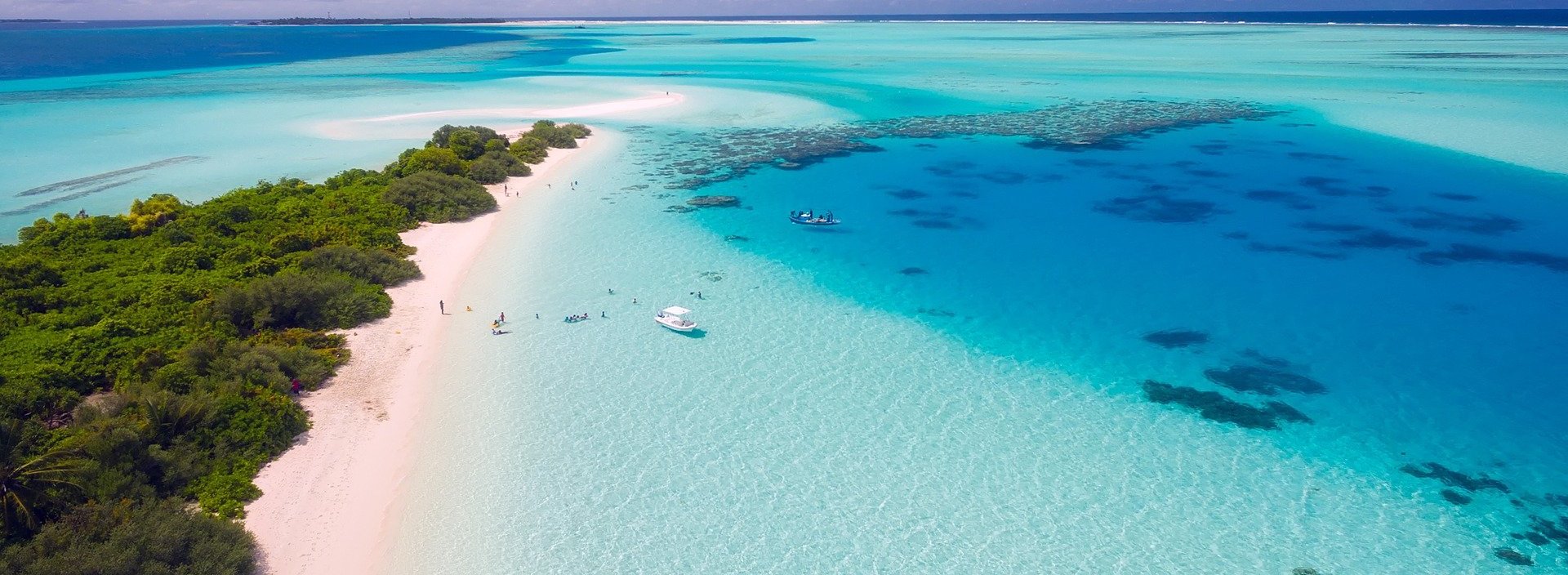
Start Planning Your Gap Year!
Gap years, career breaks & world trips.
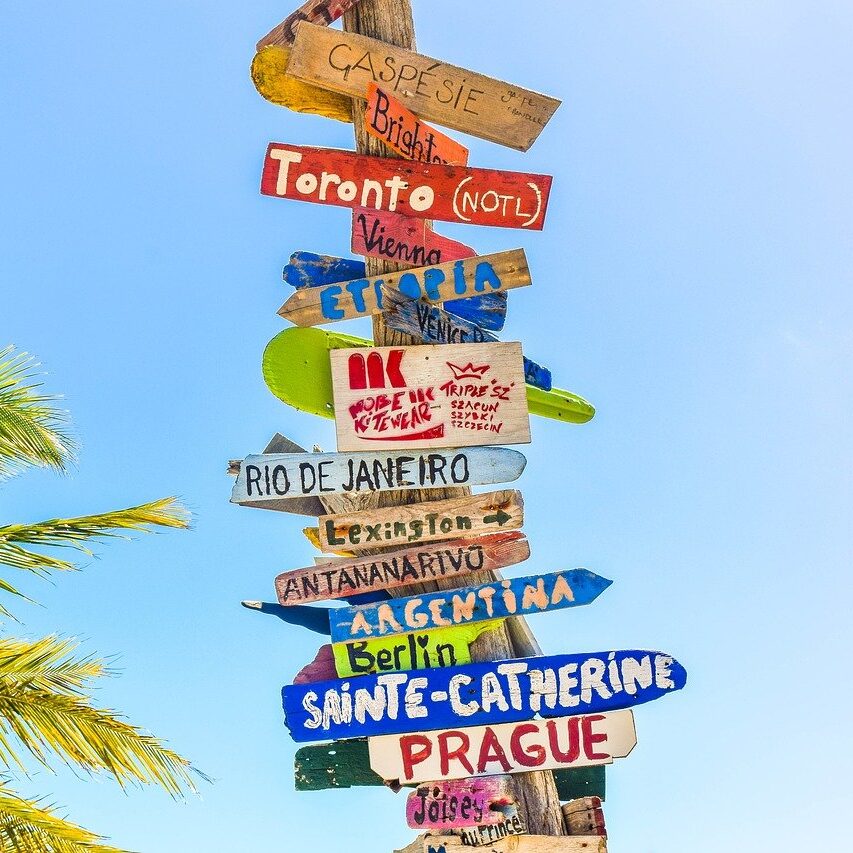
Destinations

Special Offers
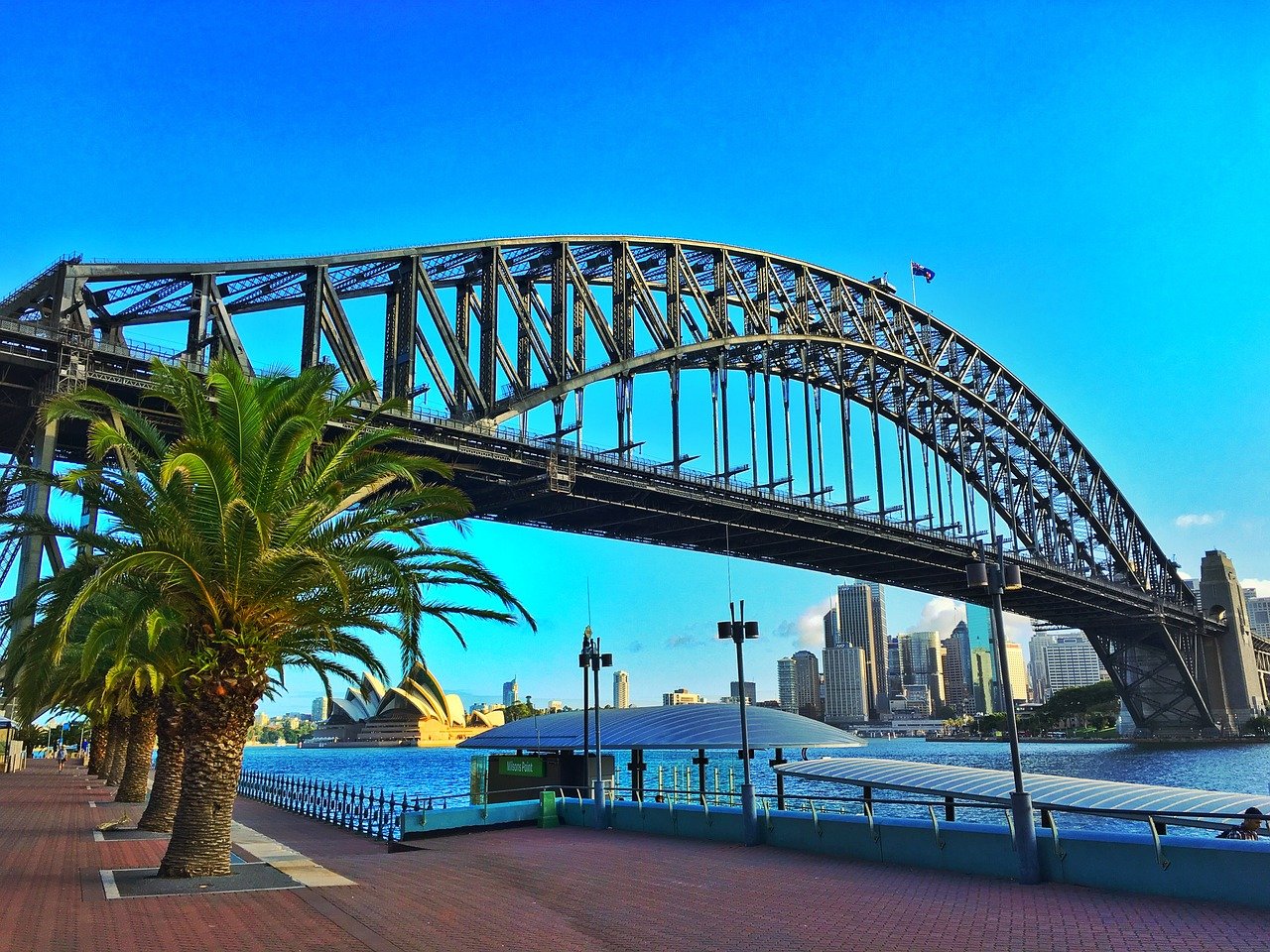
Teach English

Internships

Latest Articles

What to Pack when Backpacking Europe

5 Places Not To Miss in India

Money-Saving Spring Break Ideas

Volunteer in Costa Rica - Change Starts Here
Gap Semester Programs: Because a Year Away Sounds Too Hard
by Kaylan Reid Shipanga February 1, 2023
Not quite ready for the YEAR in gap year but still wanna sprinkle some meaningful travel into your life? No prob! You can go away for just a semester and still have a ball. See, gap year semester programs are so flexible, you can squeeze one into your life no matter how much time you’ve got for globetrotting. Trying to fit some travel into your school year? Not feelin’ a twelve month stint away from home? Even a few months abroad can make for an exhilarating travel experience. So, open up iCal and pick your top dates for hitting the road—it’s time to chat gap semester programs!

A year away may be a stretch, but a semester gap year program is the best way to meet in the middle.
The FAQs of gap year semester programs
Why do gap year semester programs.
While exciting, people turn down yearlong gap travel opportunities all the time. Why? Well, because not everyone can afford to head overseas for that long. Scheduling issues, financial constraints, or sheer terror (does the thought of a year overseas give you hives?) are some of the reasons. Let’s look deeper into why gap semester programs may be your best bet.
You’re not about that year away from home life (yet!). So you’re leaning towards a gap year because you know it will give you a more meaningful travel experience than a few weeks of vacay. But you’re also a travel newbie and twelve months abroad sounds super intimidating. A few months away on a gap semester program is the perfect stretch to get your feet wet in life overseas and have a purposeful jaunt abroad.
[ 12 Gap Year Benefits Your Future Self Will Thank You For ]
Livin’ on limited bucks. With semester travel programs, longer excursions=higher costs. Plain and simple, the price tag of traveling for a few months is generally a lot less than heading out for a year. So, if you’ve got a fixed amount of dough to spend, consider traveling for just a semester. Need guidance on how to cover the costs of a gap year? Get a part time job to save up, apply for scholarships and grants, sell some stuff, or create a good fundraiser with this FundMyTravel tool to crowdfund your program costs. Tip: Some gap programs actually offer scholarships of their own so keep this in mind as you research programs and financial aid.
Educational obligations. Were you thinkin’ semester travel programs mean losing a year of college credits? Think again! Your months overseas can totally be infused with sightseeing and stimulating courses for college credit. With college gap semester programs, you don’t have to worry about your graduation date being pushed too far back. You can go abroad in the spring and be back to campus by summer!
[Get matched with gap year semester programs ]
Personal commitments. Is your big bro getting married at the end of the year? Need to help mom move out in the spring? The beauty of gap semester programs is that with proper planning , they’ll fit snugly into whatever your long term plans are.
Do any of these reasons to do gap year semester programs ring true for you? If so, no worries—you’re not alone. There are plenty of exciting gap semester ideas in programs tailored to meet your needs.
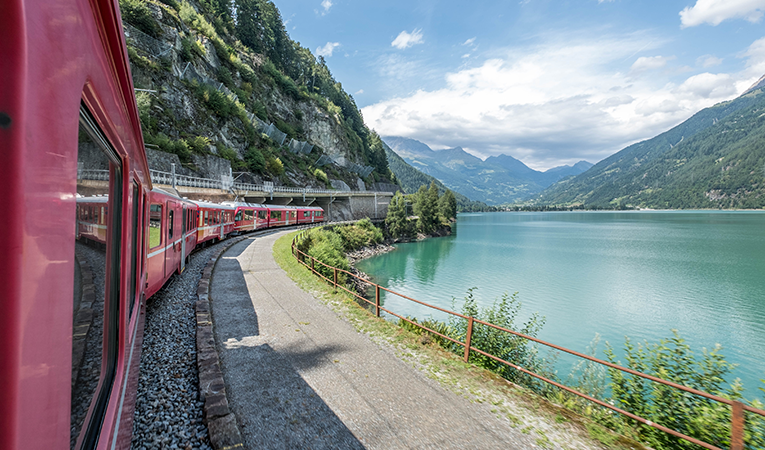
Hop on that gap year train (it will take you beautiful places, trust us!).
What are popular gap semester ideas?
So what to do during a gap semester? Dude, you can jam so much into a college gap semester as well as gap semester volunteer programs! There are plenty of opportunities to build your skills while wandering through the world’s most fascinating locales . Here are some popular gap semester ideas.
Volunteer. Spring break volunteer projects are all the rave, but taking a whole semester to give back will make a more sustainable impact. Mentor Tanzanian orphans, work as a women’s empowerment volunteer in India , help with patient intake in a rural Peruvian health clinic—there are lots of ways to fit large scale volunteer work into a semester. Traveling with gap semester volunteer programs also demonstrates humility, which will always have your resume standing out from the bunch.
[Search volunteer gap year programs ]
Intern. Need a breather from all that theory mumbo jumbo? Pack away your books and get ready to dive into some hands-on experience. Gap semester internships will get you learning your craft in real time. You’ll have the chance to sharpen your skills and get a better feel for what work in your industry excites you the most. Gap semester internships are guaranteed to give you the learning experience you crave.
[Search gap year internship programs ]
Master a language. Ready to put all those years of French I, II, III, IV...(well, you get the picture) to the test? Sign up for a semester language immersion gap year program! Between your in-country language classes and cultural outings, you’ll return home speaking the local language like a boss! Plus, being fluent in another language can open tons of professional doors down the line.
[Search language immersion gap year programs ]
Just travel! There are many gap semester programs out there designed to expose you to the many walks of life happening, step by step, each and every day on our planet. Why not travel with the comfort of logistics being taken care of, where your only task is to observe, learn, reflect, and have a damn good time (while still being culturally sensitive)?! That’s what gap year adventure travel programs are all about.
[Save and compare gap year programs side by side with MyGoAbroad ]
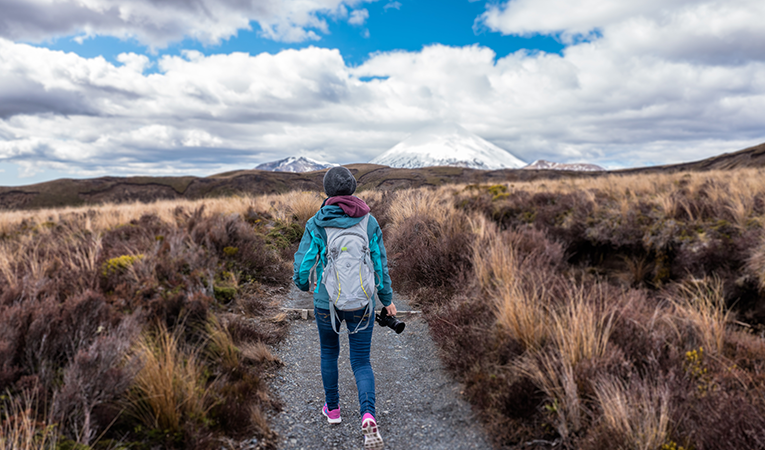
After blazing new trails on a gap year program, your own path will seem more clear.
What do I have to for my gap semester planning?
Planning a gap year is an exciting but potentially overwhelming experience. But with a smart approach, you’ll be good to go on an amazing semester abroad. So be sure to…
- Compare your stash with gap year expenses. You’ll need to get crystal clear on the costs of gap year semester programs before you pick one. Wondering if meals will be covered in your program fee or if you’ll need to budget separately for groceries? Ask your potential program advisor. Planning on buying Ankara fabrics to have some fab skirts made back home? Hit up the web and start researching the going rates for cloths in Ghanaian markets. Basically, analyze your program’s info thoroughly and any other costs you might incur . The clearer you are on how much dough you’ll need to divvy out the better you can strategize. Here's how to cover the cost of your gap year .
- Get the 411 on course credits. Many semester long volunteer programs and gap semester internships that you can get college credit for doing. Some gap year orgs have actual partnerships with universities making the credit process amazingly seamless. So, young grasshopper, chat with both your gap year and college advisors about how getting credit will work. You’ll also want to discuss how traveling will affect your status as a student.
- Research where you’re traveling to. Sure, it’s awesome to be abroad. Yet, here’s the secret to making it even more legendary: know a little history of the place you’re gapping in! So, before you fly out, dig into some of the location’s history and culture . The info you soak up will come in hand in convos with locals and give you deeper insight into the local culture, making for an even smoother gap year.
- Understand the visa process . Your gap year program advisor will give you the deets on how to apply for your visa so that you’re gappin’ legally (because you don’t wanna be the newest episode of “Locked Up Abroad”?). You might enter the country on a student visa, work permit, or other type of immigration document. Another option? Get in touch with embassies directly through the GoAbroad embassy directory . They’ll provide info on the visa application process for travelers with gap year semester programs.

You’ll meet new friends, experience new things, and return irrevocably changed.
How can I maximize my semester abroad?
Map out your gap year. Heading out for a gap year in the bustling capital of Gaborone, Botswana and geeked about hitting up all the best game drives? At first glance, a couple of months in another country sounds like a ton of time, but once your gap year is up and running, the time will zip by. So, take some time to schedule out your excursions. If you’re not careful, you’ll find yourself running out of time to complete your bucket list!
Approach potential mentors for advice. While doing gap semester travel programs, you’ll probably be surrounded by super knowledgeable folks working in your field. So, don’t feel shy about scheduling some time to pick their brains! They’ll be gold mines of useful tips on your own professional future or may even have a couple of job leads (#winning!).
Document everything. Okay, not eeeverything. But definitely pack a digital cam, some extra memory sticks, external hard drive, and a cute journal to capture the essence of your gap year. After a few months back home you might get pretty foggy about all the awesome stuff you did while away. So, carry your camera around and journal a couple of nights a week—photos and notes will be handy reference points for job and school applications! Plus, you’ll have wonderful mementos to show the fam.
4 best gap semester programs
Some run good gap semester programs, others run GREAT gap semester programs. Read on to learn the best of the best, according to meaningful travelers like you.

1. China Internship Placements
Experience life in China , the economic powerhouse of Asia, with a gap year semester internship at CIP. You can pick from several concentration areas—from medicine and law to international trade and Mandarin language classes. Gappers will learn their field in top-notch Chinese business and professional environments. There are even career coaching components to start your professional life on the right foot! What’s more? All of this is paired with plenty of fantastic sightseeing activities. When these gap semester travel programs wrap up, you’ll be fast approaching guru status in your field.
- Related: Read China Internship Placement Reviews

Brush up on your Spanish or French in Central America, South America, or Europe and get geeked about the chance to score college credit for it all! API offers semester gap year internships and coursework across several subjects. You can choose between business, humanities, language study, biodiversity (how cool does protecting Costa Rican turtle habitats sound?!), and other areas. During downtime, travelers with API gap semester travel programs head out to cultural attractions like active volcanoes, indigenous reserves, museums like Le Louvre, and so much more!
- Related: Read Academic Programs International Reviews

3. Cross-Cultural Solutions
How does going around the world and back in just over two months float your boat? That’s right, with CCS semester gap year programs, you can backpack in South America, explore the open markets of Ghana’s Volta Region, and sleep in the Mayan highlands all in one semester! You’ll spend a couple of weeks at each spot with purposeful volunteer work intertwined into every trip. These semester gap programs offer the chance to cross continents complete with cultural and language immersion.
- Related: Read Cross-Cultural Solutions Reviews

4. Carpe Diem Education
Looking for an all in one packaged deal of cultural immersion, volunteering, adventure travel, and coursework? With programs all over the world (the Caribbean, Central America, South America, Africa, and Asia), Carpe Diem guarantees gappers an epic semester abroad, complete with small groups of gappers, mentors, and team building exercises—so you’ll be sure to wrap up your travels with some new bosom buddies. When the semester ends, they’ll be some bittersweet goodbyes… but don’t worry. Carpe Diem even offers an alumni gap year program in Nepal !
- Related: Read Carpe Diem Education Reviews
[ See ALL Gap Year + Gap Semester Programs ]
Take life to the next level with gap semester programs.
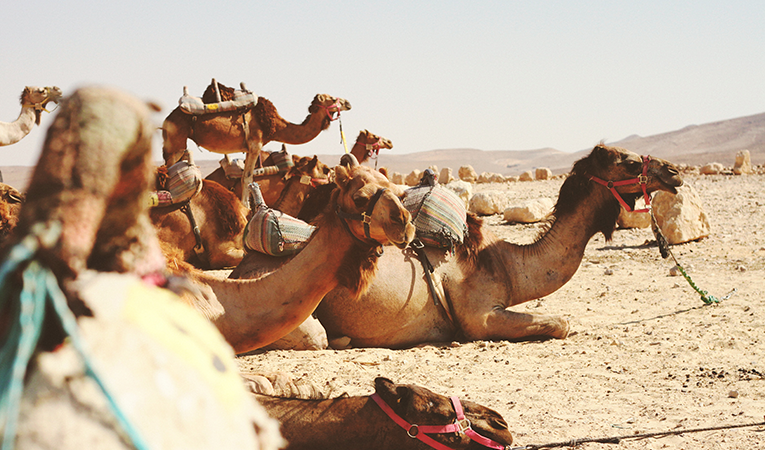
You’ll get to do things you never thought you could do!
So, you’re ready to take the plunge and embark on gap semester programs. Decided to sign up for college gap semester programs? Or maybe you’re diggin’ gap semester volunteer programs and gap semester internships. Whatever you pick, you’ll be traveling with a purpose and bound to make an impact wherever you go. And know that even a few months away can turn everything you thought you knew about yourself and your plans on its head (but in a good way!). Alright voyager, get ready to ace your most productive semester yet!
Get Matched with 5 Gap Semester Programs Abroad for FREE
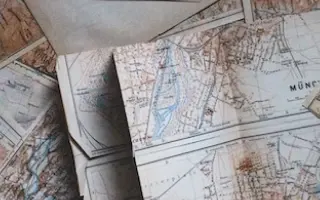
Want to Get Matched with Programs?
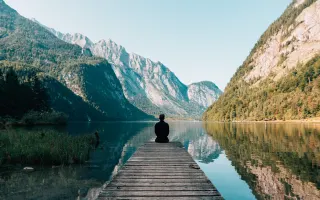
Use MyGoAbroad to Save & Compare Programs!

Join an impactful gap year exploring South Africa, France & Thailand!
Related Articles
7 crazy cool college gap year ideas, 9 forward-thinking colleges that offer gap year programs, what to know before you go back to college after a gap year, is taking a year off college the end of the world, what is a sabbatical 7 things to know, how to plan a sabbatical, popular searches, recommended programs.

748 reviews
International Volunteer HQ [IVHQ]
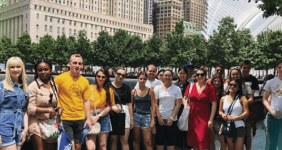
125 reviews
The Intern Group

Impact Gap Year

Institute for Global Studies
For Travelers
Travel resources, for partners.

© Copyright 1998 - 2024 GoAbroad.com ®
- Study Abroad
- Volunteer Abroad
- Intern Abroad
- Teach Abroad
- TEFL Courses
- Degrees Abroad
- High School Abroad
- Language Schools
- Adventure Travel
- Jobs Abroad
- Online Study Abroad
- Online Volunteer Programs
- Online Internships
- Online Language Courses
- Online Teaching Jobs
- Online Jobs
- Online TEFL Courses
- Online Degree Programs
Moscow tours, business travel to moscow, tour guide service, interpreting service
- Our Service
- Our Photo Album
Moscow tours, business travel to Moscow, tour guide service, interpreting service
We are here to navigate you through Moscow and beyond. We specialize in private and customer-tailored tours for individuals and groups.
Tour options include:
- Moscow tours in 1 day/2days/3days (Red Square tour, Kremlin tour, metro tour, panoramic city tour, etc);
- Moscow panoramic city tour / night Moscow by legendary retro cars ;
- Layover tours in Moscow;
- Moscow cultural heritage tours, Moscow themed tours;
- Russian home hosted visits (visit to the Russian dacha);
- Russian culinary classes;
- Moscow-St.Peterburg tour package. Two Russian capitals in one week;
- Moscow-St.Petersburg educational tours for students and children;
- Russian towns of the Golden Ring (Sergiev Posad, Suzdal, Vladimir); Trips out of Moscow
- Shore excursions (Moscow/St.Petersburg)
- Russian honeymoon tours, photo walks in Moscow;
- Moscow tours for children
- Christmas time in Moscow;
- AK-47 shooting tour, tank T-34 ride, segway tour, fishing in Moscow region.
- Group Tours ( offers for travel agencies)
We are officially endorsed by Moscow Government to guide in most iconic tourist attractions of Russia’s capital such as Red Square, St. Basil’s Cathedral, museums of the Moscow Kremlin, the Tretyakov Art Gallery, etc.
We love our city and are ready to share with you our in-depth knowledge of Moscow, this old but very dynamic and amazing city. We will be glad to provide context and fun in equal measure opening up your eyes to Russian history, culture and art.
We know how to make the most of your time while you are here and will be delighted to turn your stay in Moscow into a life experience.
Why book with us?
- We love what we do.
- We highly value responsibility and individual approach.
- Our friendly booking service will help plan your itinerary according to your wishes. We are very flexible and design the tours individually for every customer.
- We are officially recognized by Moscow Government.
- Our training, qualifications, experience and personality will ensure that your visit to Moscow is a great success.
We take part in BBC series of documentaries "World's Busiest Cities"(Moscow)

Buy Tickets to the Bolshoi Theatre

Other special offers...
Interpreting and assistance at exhibitions and conferences, our garage ( vehicles+drivers), where to stay in moscow, what and where to eat in moscow, visa support, learning and discovery, our partners (trips to st.petersburg).
Copyright 2015 - Moscow Navigator
- Moscow Tourism
- Moscow Hotels
- Moscow Bed and Breakfast
- Moscow Vacation Rentals
- Flights to Moscow
- Moscow Restaurants
- Things to Do in Moscow
- Moscow Travel Forum
- Moscow Photos
- All Moscow Hotels
- Moscow Hotel Deals
- Things to Do
- Restaurants
- Vacation Rentals
- Travel Stories
- Rental Cars
- Add a Place
- Travel Forum
- Travelers' Choice
- Help Center
Russia tourist visa - Moscow Forum
- Europe
- Russia
- Central Russia
- Moscow
Russia tourist visa
- United States Forums
- Europe Forums
- Canada Forums
- Asia Forums
- Central America Forums
- Africa Forums
- Caribbean Forums
- Mexico Forums
- South Pacific Forums
- South America Forums
- Middle East Forums
- Honeymoons and Romance
- Business Travel
- Train Travel
- Traveling With Disabilities
- Tripadvisor Support
- Solo Travel
- Bargain Travel
- Timeshares / Vacation Rentals
- Central Russia forums
- Moscow forum

Why don't you write to the hotel and ask them to fix the paperwork?
I did it and it came back wrong again..Azimut Olympia hotel. I was told Russia is beautiful and ppl there are willing to help. But this is happening. I don’t understand.. it is very torturing...
Well what can I say... Such discrepancies MAY lead to problems at the consulate and I can't see how anyone in this forum can fix your paperwork. Stuff happens, write to them again until they fix it or vote with your feet and book another hotel.
Complain to their superiors - Azimut is a hotel chain, it may work.

Agree...ask that a manager get involved. I had a similar issue a while back that almost tanked my whole trip...at a place I stay all the time which had and has been super. This is easily, rapidly resolvable...certainly within 1 day. But if not, indeed, vote with your wallet and feet...
I saw another post on this topic now closed that says you should be fine...assuming you have not yet submitted paperwork, no way would I trust this...unless you have a LOT of time, no way would I risk going thru the whole process only to get back either a rejection, or perhaps a visa that is clearly wrong.
Again, this can be easily addressed in a day...and if not, again, choose a different hotel

There is a good chance they will pick it up. We had a similar experience when the Hotel provided our Invitation but had the dates wrong, they only had the deposit date required for the invitation, not the entire stay. I didn't pick it up and sent off our Visa applications, obviously this gap in our trip was picked up, but I got back in touch with the Hotel and got the corrected Invitations over night and sent back to the Embassy.
So don't risk anything, get it right and avoid any risk, this Voucher is the most important document when applying for a Visa.
Thank you all for the input. It has finally been resolved..
Exploration547296,
Good for you :))
I thought I should check the thread, just in case
This topic has been closed to new posts due to inactivity.
- Planning trip to Russia Apr 09, 2024
- SIM card. Russian SIM cards, do they still work in the UK? Apr 09, 2024
- Train Booking Moscow to St. Peter Mar 29, 2024
- Union Pay debit card Mar 27, 2024
- Russian trying to book a hotel in Jerusalem Mar 14, 2024
- Dual Citizen Arrested in Russia Mar 12, 2024
- about clothes Feb 27, 2024
- NOTE - border crossing from Finland into Russia closed Feb 09, 2024
- Snow boots in Red Square Feb 04, 2024
- Travelling to Moscow & Murmansk with toddle in winter Feb 02, 2024
- Anyone traveling from London to Moscow this week ? Jan 27, 2024
- Booking accommodation Jan 11, 2024
- Traveling friends (Designers preferred) :) Jan 05, 2024
- Are shops and things closed during Christmas and New Week ? Dec 15, 2023
- Moscow to St Petersburg train or air?? 32 replies
- New Sapsan Express Train from Moscow to St Petersburg 18 replies
- New year's in moscow 8 replies
- Hop on Hop Off Bus Tour 5 replies
- How do you purchase Bolshoi Ballet tickets at a great price? 2 replies
- Select-a-room.com Are they legitimate? 3 replies
- Weather Moscow and St. petersburg in May 8 replies
- Night train to St Petersburg 3 replies
- ATM Access 12 replies
- Visa needed if on layover at Moscow Airport??????? 15 replies
Moscow Hotels and Places to Stay
- Where can I get initial answers to ANY question?
- Bahasa Indonesia
- Slovenščina
- Science & Tech
- Russian Kitchen
Moscow and St. Petersburg present a new tourist pass
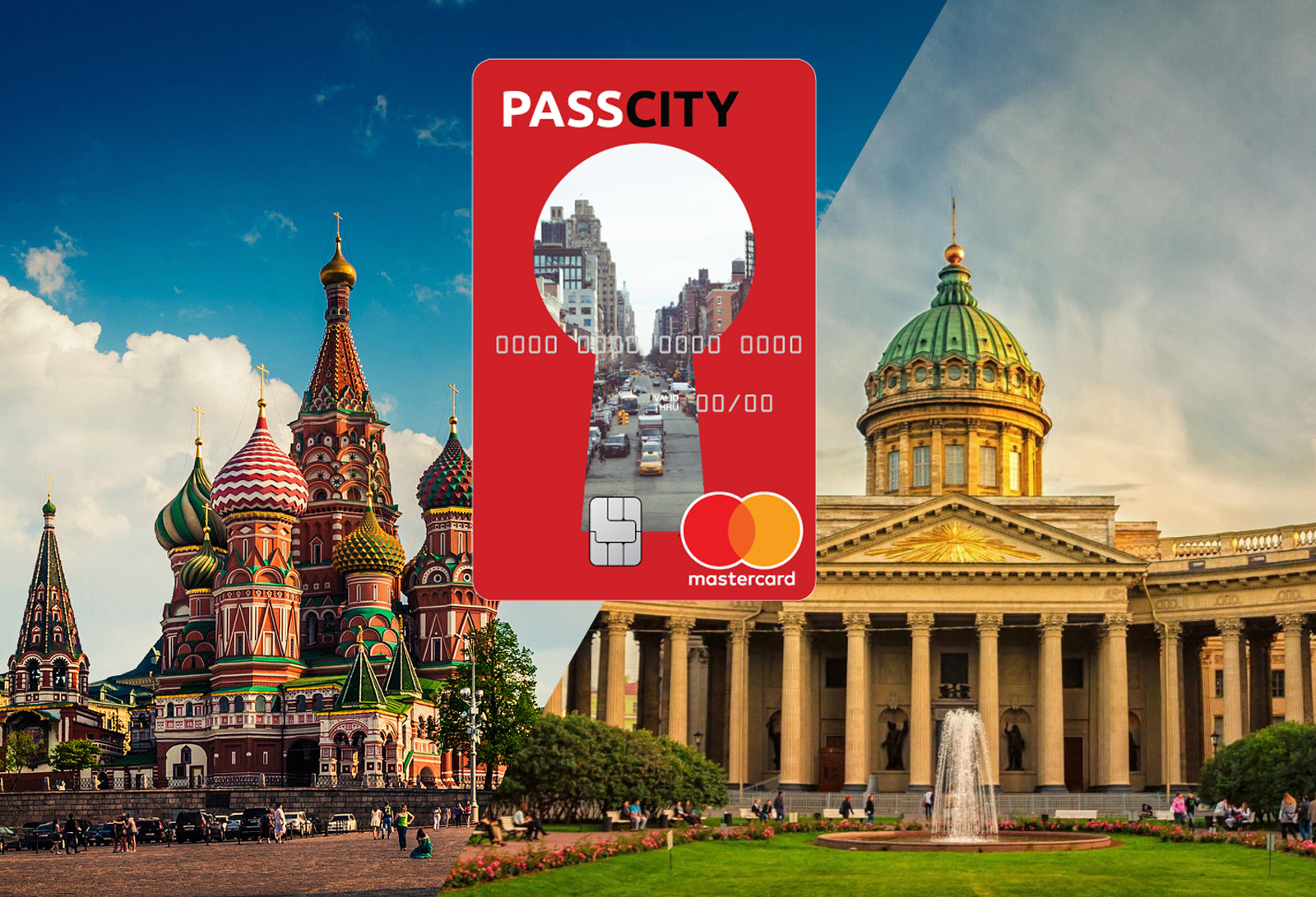
Russia has introduced a new tourist pass called PassCity , which will be of use not only to foreign travelers who have come to Russia for a few days, but also to students from overseas and expatriates whose stay extends to a few months and more. PassCity has apps available for Android and iOS with free audio guides in English and Chinese.
PassCity has become Russia's first pass which is valid in two cities at once and covers all the major museums of Moscow and St. Petersburg. The price for a tourist pass for 3/5/7/10 days varies from $80 (1 person, 3 days - 5190 rubles ) to $230 (2 people, 10 days - 14,390 rubles ). A 90/180/360-day pass costs from $ 64 (1 person, 90 days - 3990 rubles ) to $160 (2 people, 360 days - 9990 rubles ). The package for several days was designed for tourists and includes an unlimited number of museum visits per day, as well as public transit. The 3/6/12-month card is meant for temporary residents of the cities and covers one museum visit a day, without access to public transit.
Apart from admission to museums, the pass gets you free coffee in the DoubleB chain of coffee shops , several trips on the airport express in Moscow, and subway rides in St. Petersburg or by taxi ordered through the Yandex.Taxi service.
For the practical and the cautious
The Voxxter team spent more than two years developing the pass; while working on it, they established partnerships with Mastercard, Yandex.Money , Yandex.Taxi (a Russian taxi service similar to Uber ), and DoubleB , a popular chain of coffee shops in St. Petersburg and Moscow.
PassCity is as easy to use as a regular credit card: It uses the Mastercard payment system, and the chosen package of services is activated upon purchase. You can deposit money on the card and use it to pay for other goods and services: Using an extra credit card instead of your primary card when traveling is a sensible security measure.
Cards are delivered through a system that has recently gained popularity among Internet banks. "You can order the pass online or through the app, and our courier will deliver it where and when you decide, for instance, your hotel, or the railway station where the airport express arrives. Our customers have confirmed that this is a lot more convenient than having to look for a sales office in an unknown city," explains Maksim Ivlev, Voxxter CEO.
Voxxter believes the pass could be useful for tourists who come to Russia to watch upcoming sporting events, including the 2018 FIFA World Cup.
If using any of Russia Beyond's content, partly or in full, always provide an active hyperlink to the original material.
to our newsletter!
Get the week's best stories straight to your inbox
- 5 cheapest ways to travel through the world’s largest country
- See Russia visa-free: Kaliningrad, St. Petersburg and Vladivostok
This website uses cookies. Click here to find out more.
- Travel Deals
‘Fills an important gap’: Virgin Australia’s loyalty program announces new partnership
Just days after Qantas announced a major shakeup to the Frequent Flyer program, rival airline Virgin Australia has a new change for members.

Qantas drops monster 72-hour sale

Qantas slashes fares to popular destination

Scoot launch $355 Aussie fares to Europe
Australians can now earn Velocity Frequent Flyer points on their electricity and gas plans with AGL under a new partnership announced on Wednesday.
The Virgin Australia loyalty program has joined up with the Aussie energy company to launch the ‘AGL Velocity offer’.
New and moving residential AGL customers in Victoria, NSW, Queensland and South Australia (where AGL operates), can earn up to 35,000 Velocity Points over 12 months if they switch their gas and electricity to the AGL Velocity offer before June 30.
There are other offers with fewer points up for grabs for electricity only, gas only and existing customers.
The points earned can be used to redeem flights or other products at myer.com.au, the Velocity Reward Store or with Luxury Escapes.

“We know that value continues to be important for Australians amid the high cost of living, and this partnership opens up more possibilities for our members to stretch their dollar further using Velocity Points to redeem on flights, household goods and more,” Velocity Frequent Flyer chief executive Nick Rohrlach said upon making the announcement.
“The addition of AGL to our extensive partner portfolio fills an important gap for members as we continue to grow Velocity to be the best airline loyalty program in the country.”
AGL chief customer officer Jo Egan added: “The next phase of our partnership will explore sustainability initiatives, and we are pleased to work with Velocity to identify opportunities to help our customers decarbonise the way they live, move and work.”

Qantas’ rival loyalty program has a partnership with energy provider Red Energy, where customers on a ‘Qantas Red plan’ can earn 2 points for every $1 spent on their energy bills.
The AGL Velocity offer:
● New and moving customers in VIC, NSW, QLD & SA (where AGL operates) can sign up to electricity and gas with AGL on the offer and receive 30,000 Velocity Points and 5000 Velocity Points after 12 months
● New and moving customers in VIC, NSW, QLD & SA (where AGL operates) can sign up to electricity only with AGL on the offer and receive 20,000 Velocity Points and 2500 Velocity Points after 12 months
More Coverage

● New and moving customers in VIC, NSW, QLD, SA & WA (where AGL operates) can sign up to gas only with AGL on the offer and receive 10,000 Velocity Points and 2500 Velocity Points after 12 months
● Existing AGL customers in VIC, NSW, QLD, SA & WA (where AGL operates) can switch to the offer for electricity and/or gas and receive 3000 Velocity Points per gas and electricity product
More details about the partnership and offer can be found on the AGL and Velocity Frequent Flyer websites.
Add your comment to this story
To join the conversation, please log in. Don't have an account? Register
Join the conversation, you are commenting as Logout
Qantas has announced a snap sale on its domestic network with the cheapest route starting at $105.
A major airline has slashed airfares to a holiday destination that more than a million Australian holiday makers flock to every year.
Budget airline Scoot is selling flights from Australia to Europe from just $355, as well as other popular overseas destinations.
25 Questions (and Answers!) About the Great North American Eclipse
The McDonald Observatory’s guide to one of nature’s most beautiful and astounding events: What you might see, how to view it safely, how astronomers will study it, how animals might react, and some of the mythology and superstitions about the Sun’s great disappearing act.

1. What’s happening?
The Moon will cross directly between Earth and the Sun, temporarily blocking the Sun from view along a narrow path across Mexico, the United States, and Canada. Viewers across the rest of the United States will see a partial eclipse, with the Moon covering only part of the Sun’s disk.
2. When will it happen?
The eclipse takes place on April 8. It will get underway at 10:42 a.m. CDT, when the Moon’s shadow first touches Earth’s surface, creating a partial eclipse. The Big Show—totality—begins at about 11:39 a.m., over the south-central Pacific Ocean. The shadow will first touch North America an hour and a half later, on the Pacific coast of Mexico. Moving at more than 1,600 miles (2,575 km) per hour, the path of totality will enter the United States at Eagle Pass, Texas, at 1:27 p.m. CDT. The lunar shadow will exit the United States and enter the Canadian province of New Brunswick near Houlton, Maine, at 2:35 p.m. (3:35 p.m. EDT).
3. How long will totality last?
The exact timing depends on your location. The maximum length is 4 minutes, 27 seconds near Torreon, Mexico. In the United States, several towns in southwestern Texas will see 4 minutes, 24 seconds of totality. The closer a location is to the centerline of the path of totality, the longer the eclipse will last.
4. What will it look like?
Eclipse veterans say there’s nothing quite like a total solar eclipse. In the last moments before the Sun disappears behind the Moon, bits of sunlight filter through the lunar mountains and canyons, forming bright points of light known as Baily’s beads. The last of the beads provides a brief blaze known as a diamond ring effect. When it fades away, the sky turns dark and the corona comes into view— million-degree plasma expelled from the Sun’s surface. It forms silvery filaments that radiate away from the Sun. Solar prominences, which are fountains of gas from the surface, form smaller, redder streamers on the rim of the Sun’s disk.
5. What safety precautions do I need to take?
It’s perfectly safe to look at the total phase of the eclipse with your eyes alone. In fact, experts say it’s the best way to enjoy the spectacle. The corona, which surrounds the intervening Moon with silvery tendrils of light, is only about as bright as a full Moon.
During the partial phases of the eclipse, however, including the final moments before and first moments after totality, your eyes need protection from the Sun’s blinding light. Even a 99-percent-eclipsed Sun is thousands of times brighter than a full Moon, so even a tiny sliver of direct sunlight can be dangerous!
To stay safe, use commercially available eclipse viewers, which can look like eyeglasses or can be embedded in a flat sheet that you hold in front of your face. Make sure your viewer meets the proper safety standards, and inspect it before you use it to make sure there are no scratches to let in unfiltered sunlight.
You also can view the eclipse through a piece of welder’s glass (No. 14 or darker), or stand under a leafy tree and look at the ground; the gaps between leaves act as lenses, projecting a view of the eclipse on the ground. With an especially leafy tree you can see hundreds of images of the eclipse at once. (You can also use a colander or similar piece of gear to create the same effect.)
One final mode of eclipse watching is with a pinhole camera. You can make one by poking a small hole in an index card, file folder, or piece of stiff cardboard. Let the Sun shine through the hole onto the ground or a piece of paper, but don’t look at the Sun through the hole! The hole projects an image of the eclipsed Sun, allowing you to follow the entire sequence, from the moment of first contact through the Moon’s disappearance hours later.
6. Where can I see the eclipse?
In the United States, the path of totality will extend from Eagle Pass, Texas, to Houlton, Maine. It will cross 15 states: Texas, Oklahoma, Arkansas, Missouri, Illinois, Indiana, Kentucky, Ohio, Pennsylvania, New York, Vermont, New Hampshire, Maine, Tennessee, and Michigan (although it barely nicks the last two).
In Texas, the eclipse will darken the sky over Austin, Waco, and Dallas—the most populous city in the path, where totality (the period when the Sun is totally eclipsed) will last 3 minutes, 51 seconds.
Other large cities along the path include Little Rock; Indianapolis; Dayton, Toledo, and Cleveland, Ohio; Erie, Pennsylvania; Buffalo and Rochester, New York; and Burlington, Vermont.
Outside the path of totality, American skywatchers will see a partial eclipse, in which the Sun covers only part of the Sun’s disk. The sky will grow dusky and the air will get cooler, but the partially eclipsed Sun is still too bright to look at without proper eye protection. The closer to the path of totality, the greater the extent of the eclipse. From Memphis and Nashville, for example, the Moon will cover more than 95 percent of the Sun’s disk. From Denver and Phoenix, it’s about 65 percent. And for the unlucky skywatchers in Seattle, far to the northwest of the eclipse centerline, it’s a meager 20 percent.
The total eclipse path also crosses Mexico, from the Pacific coast, at Mazatlán, to the Texas border. It also crosses a small portion of Canada, barely including Hamilton, Ontario. Eclipse Details for Locations Around the United States • aa.usno.navy.mil/data/Eclipse2024 • eclipse.aas.org • GreatAmericanEclipse.com
7. What causes solar eclipses?
These awe-inspiring spectacles are the result of a pleasant celestial coincidence: The Sun and Moon appear almost exactly the same size in Earth’s sky. The Sun is actually about 400 times wider than the Moon but it’s also about 400 times farther, so when the new Moon passes directly between Earth and the Sun—an alignment known as syzygy—it can cover the Sun’s disk, blocking it from view.
8. Why don’t we see an eclipse at every new Moon?
The Moon’s orbit around Earth is tilted a bit with respect to the Sun’s path across the sky, known as the ecliptic. Because of that angle, the Moon passes north or south of the Sun most months, so there’s no eclipse. When the geometry is just right, however, the Moon casts its shadow on Earth’s surface, creating a solar eclipse. Not all eclipses are total. The Moon’s distance from Earth varies a bit, as does Earth’s distance from the Sun. If the Moon passes directly between Earth and the Sun when the Moon is at its farthest, we see an annular eclipse, in which a ring of sunlight encircles the Moon. Regardless of the distance, if the SunMoon-Earth alignment is off by a small amount, the Moon can cover only a portion of the Sun’s disk, creating a partial eclipse.
9. How often do solar eclipses happen?
Earth sees as least two solar eclipses per year, and, rarely, as many as five. Only three eclipses per two years are total. In addition, total eclipses are visible only along narrow paths. According to Belgian astronomer Jean Meuss, who specializes in calculating such things, any given place on Earth will see a total solar eclipse, on average, once every 375 years. That number is averaged over many centuries, so the exact gap varies. It might be centuries between succeeding eclipses, or it might be only a few years. A small region of Illinois, Missouri, and Kentucky, close to the southeast of St. Louis, for example, saw the total eclipse of 2017 and will experience this year’s eclipse as well. Overall, though, you don’t want to wait for a total eclipse to come to you. If you have a chance to travel to an eclipse path, take it!
10. What is the limit for the length of totality?
Astronomers have calculated the length of totality for eclipses thousands of years into the future. Their calculations show that the greatest extent of totality will come during the eclipse of July 16, 2186, at 7 minutes, 29 seconds, in the Atlantic Ocean, near the coast of South America. The eclipse will occur when the Moon is near its closest point to Earth, so it appears largest in the sky, and Earth is near its farthest point from the Sun, so the Sun appears smaller than average. That eclipse, by the way, belongs to the same Saros cycle as this year’s.
11. When will the next total eclipse be seen from the United States?
The next total eclipse visible from anywhere in the United States will take place on March 30, 2033, across Alaska. On August 22, 2044, a total eclipse will be visible across parts of Montana, North Dakota, and South Dakota. The next eclipse to cross the entire country will take place on August 12, 2045, streaking from northern California to southern Florida. Here are the other total solar eclipses visible from the contiguous U.S. this century:
March 30, 2052 Florida, Georgia, tip of South Carolina May 11, 2078 From Louisiana to North Carolina May 1, 2079 From Philadelphia up the Atlantic coast to Maine September 14, 2099 From North Dakota to the Virginia-North Carolina border
12. What is the origin of the word ‘eclipse?’
The word first appeared in English writings in the late 13th century. It traces its roots, however, to the Greek words “ecleipsis” or “ekleipein.” According to various sources, the meaning was “to leave out, fail to appear,” “a failing, forsaking,” or “abandon, cease, die.”
13. Do solar eclipses follow any kind of pattern?
The Moon goes through several cycles. The best known is its 29.5-day cycle of phases, from new through full and back again. Other cycles include its distance from Earth (which varies by about 30,000 miles (50,000 km) over 27.5 days) and its relationship to the Sun’s path across the sky, known as the ecliptic (27.2 days), among others. These three cycles overlap every 6,585.3 days, which is 18 years, 11 days, and 8 hours.
This cycle of cycles is known as a Saros (a word created by Babylonians). The circumstances for each succeeding eclipse in a Saros are similar—the Moon is about the same distance from Earth, for example, and they occur at the same time of year. Each eclipse occurs one-third of the way around Earth from the previous one, however; the next eclipse in this Saros, for example, will be visible from parts of the Pacific Ocean.
Each Saros begins with a partial eclipse. A portion of the Moon just nips the northern edge of the Sun, for example, blocking only a fraction of the Sun’s light. With each succeeding eclipse in the cycle, the Moon covers a larger fraction of the solar disk, eventually creating dozens of total eclipses. The Moon then slides out of alignment again, this time in the opposite direction, creating more partial eclipses. The series ends with a grazing partial eclipse on the opposite hemisphere (the southern tip, for example).
Several Saros cycles churn along simultaneously (40 are active now), so Earth doesn’t have to wait 18 years between eclipses. They can occur at intervals of one, five, six, or seven months.
The April 8 eclipse is the 30th of Saros 139, a series of 71 events that began with a partial eclipse, in the far north, and will end with another partial eclipse, this time in the far southern hemisphere. The next eclipse in this Saros, also total, will take place on April 20, 2042.
First eclipse May 17, 1501
First total eclipse December 21, 1843
Final total eclipse March 26, 2601
Longest total eclipse July 16, 2186, 7 minutes, 29 seconds
Final partial eclipse July 3, 2763
All eclipses 71 (43 total, 16 partial, 12 hybrid)
Source: NASA Catalog of Solar Eclipses: eclipse.gsfc.nasa.gov/SEsaros/SEsaros139.html
14. What about eclipse seasons?
Eclipses occur in “seasons,” with two or three eclipses (lunar and solar) in a period of about five weeks. Individual eclipses are separated by two weeks: a lunar eclipse at full Moon, a solar eclipse at new Moon (the sequence can occur in either order). If the first eclipse in a season occurs during the first few days of the window, then the season will have three eclipses. When one eclipse in the season is poor, the other usually is much better.
That’s certainly the case with the season that includes the April 8 eclipse. It begins with a penumbral lunar eclipse on the night of March 24, in which the Moon will pass through Earth’s outer shadow. The eclipse will cover the Americas, although the shadow is so faint that most skywatchers won’t notice it.

This article was previously published in the March/April 2024 issue of StarDate magazine, a publication of The University of Texas at Austin’s McDonald Observatory. Catch StarDate’s daily radio program on more than 300 stations nationwide or subscribe online at stardate.org .
15. How can astronomers forecast eclipses so accurately?
They’ve been recording eclipses and the motions of the Moon for millennia. And over the past half century they’ve been bouncing laser beams off of special reflectors carried to the Moon by Apollo astronauts and Soviet rovers. Those observations reveal the Moon’s position to within a fraction of an inch. Using a combination of the Earth-Moon distance, the Moon’s precise shape, Earth’s rotation and its distance from the Sun, and other factors, astronomers can predict the timing of an eclipse to within a fraction of a second many centuries into the future.
Edmond Halley made the first confirmed solar eclipse prediction, using the laws of gravity devised only a few decades earlier by Isaac Newton. Halley forecast that an eclipse would cross England on May 3, 1715. He missed the timing by just four minutes and the path by 20 miles, so the eclipse is known as Halley’s Eclipse.
16. What are the types of solar eclipses?
Total : the Moon completely covers the Sun.
Annular : the Moon is too far away to completely cover the Sun, leaving a bright ring of sunlight around it.
Partial : the Moon covers only part of the Sun’s disk.
Hybrid : an eclipse that is annular at its beginning and end, but total at its peak.
17. What are Baily’s beads?
During the minute or two before or after totality, bits of the Sun shine through canyons and other features on the limb of the Moon, producing “beads” of sunlight. They were first recorded and explained by Edmond Halley, in 1715. During a presentation to the Royal Academy of Sciences more than a century later, however, astronomer Frances Baily first described them as “a string of beads,” so they’ve been known as Baily’s beads ever since. Please note that Baily’s beads are too bright to look at without eye protection!
18. Will Earth always see total solar eclipses?
No, it will not. The Moon is moving away from Earth at about 1.5 inches (3.8 cm) per year. Based on that rate of recession, in about 600 million years the Moon would have moved so far from Earth that it would no longer appear large enough to cover the Sun. The speed at which the Moon separates from Earth changes over the eons, however, so scientists aren’t sure just when Earth will see its final total solar eclipse.
19. How will the eclipse affect solar power?
If your solar-powered house is in or near the path of totality, the lights truly will go out, as they do at night. For large power grids, the eclipse will temporarily reduce the total amount of electricity contributed by solar generation. During the October 14, 2023, annular eclipse, available solar power plummeted in California and Texas. At the same time, demand increased as individual Sun-powered homes and other buildings began drawing electricity from the power grid. Both networks were able to compensate with stations powered by natural gas and other sources.
The power drop during this year’s eclipse could be more dramatic because there will be less sunlight at the peak of the eclipse.
20. What are some of the myths and superstitions associated with solar eclipses?
Most ancient cultures created stories to explain the Sun’s mysterious and terrifying disappearances.
In China and elsewhere, it was thought the Sun was being devoured by a dragon. Other cultures blamed a hungry frog (Vietnam), a giant wolf loosed by the god Loki (Scandinavia), or the severed head of a monster (India). Still others saw an eclipse as a quarrel (or a reunion) between Sun and Moon. Some peoples shot flaming arrows into the sky to scare away the monster or to rekindle the solar fire. One especially intriguing story, from Transylvania, said that an eclipse occurred when the Sun covered her face in disgust at bad human behavior.
Eclipses have been seen as omens of evil deeds to come. In August 1133, King Henry I left England for Normandy one day before a lengthy solar eclipse, bringing prophesies of doom. The country later was plunged into civil war, and Henry died before he could return home, strengthening the impression that solar eclipses were bad mojo.
Ancient superstitions claimed that eclipses could cause plague and other maladies. Modern superstitions say that food prepared during an eclipse is poison and that an eclipse will damage the babies of pregnant women who look at it. None of that is true, of course. There’s nothing at all to fear from this beautiful natural event.
21. How do animals react to solar eclipses?
Scientists haven’t studied the topic very thoroughly, but they do have some general conclusions. Many daytime animals start their evening rituals, while many nighttime animals wake up when the eclipse is over, perhaps cursing their alarm clocks for letting them sleep so late!
During the 2017 total eclipse, scientists observed 17 species at Riverbanks Zoo in Columbia, South Carolina. About three-quarters of the species showed some response as the sky darkened. Some animals acted nervous, while others simply headed for bed. A species of gibbon had the most unusual reaction, moving excitedly and chattering in ways the zookeepers hadn’t seen before.
Other studies have reported that bats and owls sometimes come out during totality, hippos move toward their nighttime feeding grounds, and spiders tear down their webs, only to rebuild them when the Sun returns. Bees have been seen to return to their hives during totality and not budge until the next day, crickets begin their evening chorus, and, unfortunately, mosquitoes emerge, ready to dine on unsuspecting eclipse watchers.
A NASA project, Eclipse Soundscapes, is using volunteers around the country to learn more about how animals react to the changes. The project collected audio recordings and observations by participants during the annular eclipse last year, and will repeat the observations this year. Volunteers can sign up at eclipsesoundscapes.org
22. How will scientists study this year’s eclipse?
Astronomers don’t pay quite as much professional attention to solar eclipses as they did in decades and centuries past. However, they still schedule special observations to add to their knowledge of the Sun and especially the inner edge of the corona.
Sun-watching satellites create artificial eclipses by placing a small disk across the face of the Sun, blocking the Sun’s disk and revealing the corona, solar prominences, and big explosions of charged particles known as coronal mass ejections.
Because of the way light travels around the edges of an eclipsing disk, however, it’s difficult to observe the region just above the Sun’s visible surface, which is where much of the action takes place. The corona is heated to millions of degrees there, and the constant flow of particles known as the solar wind is accelerated to a million miles per hour or faster, so solar astronomers really want to see that region in detail. The eclipsing Moon doesn’t create the same effects around the limb of the Sun, so a solar eclipse still provides the best way to look close to the Sun’s surface.
For this year’s eclipse, some scientists will repeat a series of experiments they conducted in 2017 using a pair of highaltitude WB-57 aircraft to “tag team” through the lunar shadow, providing several extra minutes of observations.
Other scientists will use the eclipse to study Earth’s ionosphere, an electrically charged layer of the atmosphere that “bends” radio waves, allowing them to travel thousands of miles around the planet. Sunlight rips apart atoms and molecules during the day, intensifying the charge. At night, the atoms and molecules recombine, reducing the charge.
Physicists want to understand how the ionosphere reacts to the temporary loss of sunlight during an eclipse. They will do so with the help of thousands of volunteer ham radio operators, who will exchange messages with others around the planet. During last October’s annular eclipse, when the Moon covered most but not all of the Sun, the experiment showed a large and immediate change in the ionosphere as the sunlight dimmed.
NASA also will launch three small “sounding” rockets, which loft instruments into space for a few minutes, to probe the ionosphere shortly before, during, and shortly after the eclipse.
Another project will use radar to study changes in the interactions between the solar wind and Earth’s atmosphere, while yet another will use a radio telescope to map sunspots and surrounding regions as the Moon passes across them.
One project will piece together images of the eclipse snapped through more than 40 identical telescopes spaced along the path of totality to create a one-hour movie of the eclipse. The telescopes will be equipped with instruments that see the three-dimensional structure of the corona, allowing solar scientists to plot how the corona changes.
23. What have astronomers learned from eclipses?
Solar eclipses have been powerful tools for studying the Sun, the layout of the solar system, and the physics of the universe.
Until the Space Age, astronomers could see the Sun’s corona only during eclipses, so they traveled around the world to catch these brief glimpses of it.
Eclipses also offered a chance to refine the scale of the solar system. Watching an eclipse from different spots on Earth and comparing the angles of the Moon and Sun helped reveal the relative sizes and distances of both bodies, which were important steps in understanding their true distances.
During an eclipse in 1868, two astronomers discovered a new element in the corona. It was named helium, after Helios, a Greek name for the Sun. The element wasn’t discovered on Earth until a quarter of a century later.
An eclipse in 1919 helped confirm General Relativity, which was Albert Einstein’s theory of gravity. The theory predicted that the gravity of a massive body should deflect the path of light rays flying near its surface. During the eclipse, astronomers found that the positions of background stars that appeared near the Sun were shifted by a tiny amount, which was in perfect agreement with Einstein’s equations.
Today, astronomers are using records of eclipses dating back thousands of years to measure changes in Earth’s rotation rate and the distance to the Moon.
24. How did astronomers study eclipses in the past?
With great effort! From the time they could accurately predict when and where solar eclipses would be visible, they organized expeditions that took them to every continent except Antarctica, on trips that lasted months and that sometimes were spoiled by clouds or problems both technical and human.
During the American Revolution, for example, a group of Harvard scientists led by Samuel Williams received safe passage from the British army to view an eclipse from Penobscot Bay, Maine, on October 21, 1780. Williams slightly miscalculated the eclipse path, though, so the group missed totality by a few miles. (The expedition did make some useful observations, however.)
In 1860, an expedition headed by Simon Newcomb, one of America’s top astronomers, journeyed up the Saskatchewan River, hundreds of miles from the nearest city, braving rapids, mosquitoes, and bad weather. After five grueling weeks, they had to stop short of their planned viewing site, although at a location still inside the eclipse path. Clouds covered the Sun until almost the end of totality, however, so the expedition came up empty.
King Mongkut of Siam invited a French expedition and hundreds of other dignitaries to view an eclipse from present-day Thailand in 1868. He built an observatory and a large compound to house his guests at a site Mongkut himself had selected as the best viewing spot. The eclipse came off perfectly, but many visitors contracted malaria. So did Mongkut, who died a few weeks later.
An expedition in 1914, to Russia, was plagued by both clouds and the start of World War I. The team abandoned its instruments at a Russian observatory and escaped through Scandinavia.
The eclipse of July 29, 1878, offered fewer impediments. In fact, it was a scientific and social extravaganza. The eclipse path stretched from Montana Territory to Texas. Teams of astronomers from the United States and Europe spread out along the path. Thomas Edison stationed his group in Wyoming, where he used a tasimeter, a device of his own creation, to try to measure the temperature of the corona. Samuel Pierpoint Langley, a future secretary of the Smithsonian, was atop Pikes Peak in Colorado. Maria Mitchell, perhaps America’s leading female scientist, decamped to Denver. And Asaph Hall, who had discovered the moons of Mars just the year before, journeyed to the flatlands of eastern Colorado.
Thousands of average Americans joined the festivities, paying outrageous prices for some of the best viewing spots. Some things, it seems, never change.
25. What about lunar eclipses?
While solar eclipses happen during new Moon, lunar eclipses occur when the Moon is full, so it aligns opposite the Sun in our sky. The Moon passes through Earth’s shadow. In a total eclipse, the entire lunar disk turns orange or red. In a partial eclipse, Earth’s inner shadow covers only a portion of the Moon. And during a penumbral eclipse, the Moon passes through the outer portion of Earth’s shadow, darkening the Moon so little that most people don’t even notice it.
Lunar eclipses happen as often as solar eclipses—at least twice per year. This is a poor year for lunar eclipses, however. There is a penumbral eclipse on the night of March 24, with the Moon slipping through Earth’s faint outer shadow, and a partial eclipse on the night of September 17, in which the Moon barely dips into the darker inner shadow. Both eclipses will be visible from most of the United States.
Explore Latest Articles
Apr 10, 2024
Clint Dawson and Stephen Vladeck Honored With President’s Research Impact Award

Apr 09, 2024
UT’s Excellence and Impact On Display in Latest Graduate School Rankings

Apr 05, 2024
A UTotal Solar Eclipse

I shopped for spring clothes at Gap and Banana Republic, and I'm not sure I'd go back to either retailer
- I shopped for clothes and jewelry at Gap and Banana Republic, and neither retailer impressed me.
- I didn't buy anything at either store, but liked Banana Republic's selection of jewelry.
- Although I can afford to spend more money on clothing, I'd rather splurge on a meal or vacation.

It's been nearly a decade since I shopped at Gap or Banana Republic, but the retailers — both owned by parent company Gap Inc. — have been mall staples for as long as I can remember.
However, after seeing that Gap Inc. closed 350 Gap and Banana Republic locations since 2020 and hired former Mattel executive Richard Dickson to take over as the parent company's CEO, I was curious to see what the retailers were like today.
I recently visited both stores at my local Orlando mall to get a sense of the value each offers. Here's what my experience was like.
I started my shopping trip at Gap.
Gap is known for its casual, classic clothing, accessories, and shoes. There are over 700 store locations in North America and Asia.
I hadn't shopped at Gap in about 10 years, but I remembered the retailer selling pieces that were a little more expensive than those found at other stores like Old Navy.
Gap had a huge selection of denim.
I found that most of the women's jeans at Gap were made with cotton and either polyester or spandex, and priced between $70 and $80.
By comparison, my favorite pair of jeans from Old Navy — which is also owned by Gap Inc. — are made with a similar blend of materials and cost $45.
Personally, if I'm going to pay more for a pair of jeans, I'd rather they be made with high-quality 100% cotton.
Still, I was happy to see Gap offered jeans in various rises, colors, and fits.
Even simple spring tops seemed pricey to me.
Gap carried simple tees and tanks that looked perfect for spring, like brightly colored tops with cute eyelet-lace accents.
I thought about purchasing one for my warm-weather wardrobe but reconsidered when I saw it cost $40. Because I live in Florida, where I sweat through my clothing most days, I prefer to spend less money on tops.
When looking online a few weeks later, I saw that same top marked down to $15, which felt like a way better value for a basic shirt.
After seeing how generous Gap is with online sales, I'm glad I didn't buy it for full price.
Gap was having a sale, but I didn't think it was a great deal.
Gap had a sign advertising a buy one, get one 50% off sale, but I didn't think this was a very good value.
For example, purchasing an $80 pair of jeans to get a second for $40 didn't feel like much of a savings to me. I was also surprised that I didn't find a clearance rack or other on-sale items in the store.
Again, when checking on the Gap website a few weeks later, I noticed most jeans were 50% off — and you didn't need to buy two to get the deal. I would've been a bit frustrated if I'd paid $120 for two pairs of jeans instead of $80.
I thought the jewelry display looked cheap.
Gap's jewelry, which included $20 bangle bracelets and $10 earrings, appeared stylish and reasonably priced.
Unfortunately, the rotating cube-tower display reminded me of something at a cheap mall-accessory store. Nothing about the jewelry section matched the vibe of the rest of Gap.
In my opinion, the entire display felt like an afterthought.
Gap had pretty spring dresses, but they were a bit pricey for my budget.
Gap's dresses included designs with eyelet-lace patterns and came in cute springtime colors like pink and green.
However, they ranged from $100 to $170, which I wouldn't pay for a simple dress. I often shop clearance racks or visit discount or thrift stores to hunt for high-end brands for less than $100, which I think is a better value.
Next, I went to Banana Republic.
Banana Republic is a clothing and accessory store with over 400 locations worldwide. The store sells menswear, womenswear, footwear, and accessories.
I always thought Banana Republic was on the pricier end of mid-range mall retailers. Right off the bat, I noticed women's jeans cost well over $100 and saw a turtleneck for $130.
The store had some jeans, but the selection wasn't as large as it was at Gap.
At Gap, the denim selection was spread across the store. At Banana Republic, however, I only found jeans in one small section. There weren't as many styles on display there, either.
I found the jeans ranged in price from $110 to $150.
I really liked Banana Republic's camisoles but didn't buy any of them.
One of the prettiest things at Banana Republic was a silk camisole that came in pink, black, and cream colors. Unfortunately, each tiny top cost over $100, which I didn't think was a great value.
As a mom of four who handles our family's grocery budget, I immediately thought about how $100 easily feeds my husband and children for a week.
I found only one item on sale in the entire store.
The only discount I found at Banana Republic was a $300 wool coat marked down to $230.
These coats, which were all in extra-small sizes, were placed on a table in the back of the store. Perhaps it varies by location, but I didn't find any other on-sale or clearance items.
The jewelry display was beautiful, but I'd rather shop at a small business.
A large display table held several beautiful jewelry pieces, like hoop earrings and bangle bracelets, priced from $50 to $100.
These prices were reasonable because the jewelry was unique and seemed high quality. Still, I'd prefer to purchase jewelry from an independent small businesses rather than a retail chain.
I found Banana Republic's casual dresses to be a little pricey.
Some of the basic linen dresses I saw at Banana Republic cost $150.
It didn't seem like a bad price, considering the dresses were 100% linen, but I wouldn't pay that much for something so casual that I'd only wear around my beach town.
At the end of the day, neither store really impressed me.
I love hunting for clothing that offers great value, so the prices at Gap and Banana Republic didn't impress me.
The shopping experience reminded me that, although I can afford to spend more on clothing, I'd rather spend my money on a delicious meal or family vacation. I also realized I could benefit from checking for sales online more regularly instead of shopping in stores.
I love wearing a cute outfit as much as the next girl, but I'd prefer more affordable clothes than the options available at Gap and Banana Republic.
- Main content

IMAGES
VIDEO
COMMENTS
INDOOR (FR, EN) : 2 rooms / OUTDOOR (FR, EN, NL, DE) : The Game, The Target, Sherlock located in the center of Gap, the Domaine of Charance in Gap, or the medieval center of Tallard / OUTDOOR (FR only) : La Bataille de l'Eau located in Domaine of Charance in Gap Visit our site and book your next adventure with family or friends !
Gap, located in the Hautes-Alpes department, is a tourist destination particularly appreciated for its cultural and natural heritage. Nicknamed the sweet capital of the Southern French Alps, the city has played a key role and was an important interchange hub, linking Marseille to Grenoble. Make the most of your holidays in Gap to discover ...
An all-terrain destination! After your walk, head to Plateau de Gap-Bayard for a relaxing round of golf on the 18-hole course. Alternatively, you can opt for a fitness trail or spot of cross-country skiing. The reputed Gap-Tallard airfield is a one-stop shop for adrenaline feaks, with skydiving, paragliding and ultralight flights on the menu.
10. Station Gap-Bayard. Source: gap-bayard. Station Gap-Bayard. In winter Gap gets a healthy coating of snow but you'll have to travel a little to get to a traditional Alpine skiing resort. But just ten minutes from the Centre-Ville is a snow-based activity centre with more than 50 kilometres of cross-country trails.
Tourism, holidays & weekends guide in the Hautes-Alpes. 30 days of French free of charge! Learn French online with a fun daily personalised course by email. Get one week free starting from today! Built at an altitude of 735 metres, Gap is the highest chief département town (préfecture) in France. Its historic centre is the perfect place for a ...
Visit near Gap with France This Way reviews. Lake Serre-Poncon. Among many beautiful Alpine lakes we mention the Lac de Serre-Poncon because of its spectacular setting and wide range of leisure activities. Valgaudemar Valley. The valley of Valgaudemar is one of many picturesque natural highlughts in the high Alps region.
The Gap Town Clock was built in 1892 and is a prominent feature along Route 41 at Bridge Street. Fortunately, there is a Gap Clock Tower Association to maintain the gleaming white tower and grounds. in fact, both are in pristine condition. The actual clock dates from at least 1872.
10 PRACTICAL CLICKS. Official website of the Tourist Office Gap Tallard Valleys. Discover our destination between Provence and the Alps, in the heart of the Southern Alps.
What is Gap Year Travel? Traditionally, a gap year was an extended break taken just after finishing school, before starting university, or just after graduating. Nowadays, gap year travel covers a lot more than that! Gap year travel can come in all shapes and sizes. Trips can be as long or as short as you like: anything from a few days, to a ...
Gap Travel has grown because taking a gap year or gap break has become the norm for young people leaving school or university. Now, with tuition fees presenting a financial threat to potential university students, and with the current poor employment prospects, many young people are thinking that they may just as well take a gap trip. ...
The global adventure tourism market is booming, experts say, with its expenditures topping $680 billion, according to a 2021 report from the Adventure Travel Trade Association. [1/10]People sit in ...
Australia is a highly desirable gap year destination for travelers worldwide. It boasts of the second most gap year programs of any destination and offers a working holiday visa, giving gappers from the US, UK, and many other countries the ability to legally work and travel for at least a year.
Gap year travel. A gap year is an extended break that some people take at a life transition, such as between studies, between study and work, or between careers. There's no need for such a trip to be precisely a year, of course, but a year is a typical length of time for people who have just finished secondary school: they typically have to ...
G for Good. When you travel with us, you experience first-hand our commitment to making travel a force for good is in everything we do. The official site of the world's greatest adventure travel company. We offer a wide selection of small-group tours, safaris and expeditions. Start exploring.
New York. EF Gap Semester Class of Spring 2019. The world leader in international education. When you travel with EF Education First, you travel with a global organization that has been in operation since 1965. EF's mission has always been to open the world through education, and we've delivered on that promise for millions of students.
Gap Years, Career Breaks & World Trips. Destinations. Ideas
These include Australia, New Zealand, and (parts of) Indonesia. Oceania can be an ideal gap year location for many because countries, especially Australia and New Zealand, have reasonable minimum wages and a friendly working holiday visa scheme permitting up to a year of work and travel. Consider starting your Oceania gap year off in Australia ...
Shop the latest collection of travel clothes at GAP. Find comfortable and stylish options for your next adventure. Perfect for long flights, exploring new cities, and everything in between. Shop now and travel in style with GAP.
Get the 411 on course credits. Many semester long volunteer programs and gap semester internships that you can get college credit for doing. Some gap year orgs have actual partnerships with universities making the credit process amazingly seamless. So, young grasshopper, chat with both your gap year and college advisors about how getting credit ...
Eco-tours, hikings in Moscow region. Trips to the towns of the Golden Ring of Russia. MoscowNavigator International Travel Club. St. Petersburg tours. Tour options include: Moscow tours in 1 day/2days/3days (Red Square tour, Kremlin tour, metro tour, panoramic city tour, etc); Moscow panoramic city tour / night Moscow by legendary retro cars;
Answer 1 of 10: I got my tourist voucher from my hotel with stamp everything. But the hotel just filled in the info as they want, my husband becomes female and my daughter became Mrs. the only thing correct is the passport number and the dates in Moscow. Am I going...
PassCity has become Russia's first pass which is valid in two cities at once and covers all the major museums of Moscow and St. Petersburg. The price for a tourist pass for 3/5/7/10 days varies ...
You cannot resist our Two Hearts of Russia (7 Days &6 Nights), Golden Moscow (4 Days &3 Nights), Sochi (3 Days & 2 Nights), Golden Ring (1 Day & 2 Days), and many more. As a leading travel agency specializing in the tour to Russia and Former Soviet Republics, we are connecting the travellers from every part of the world for more than 10 years.
'Fills an important gap': Virgin Australia's loyalty program announces new partnership. Just days after Qantas announced a major shakeup to the Frequent Flyer program, rival airline Virgin ...
That number is averaged over many centuries, so the exact gap varies. It might be centuries between succeeding eclipses, or it might be only a few years. A small region of Illinois, Missouri, and Kentucky, close to the southeast of St. Louis, for example, saw the total eclipse of 2017 and will experience this year's eclipse as well ...
Gap's dresses included designs with eyelet-lace patterns and came in cute springtime colors like pink and green. However, they ranged from $100 to $170, which I wouldn't pay for a simple dress.